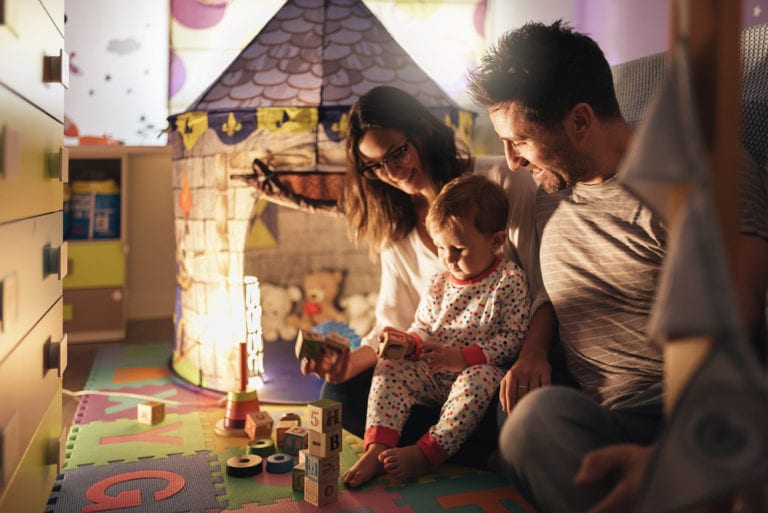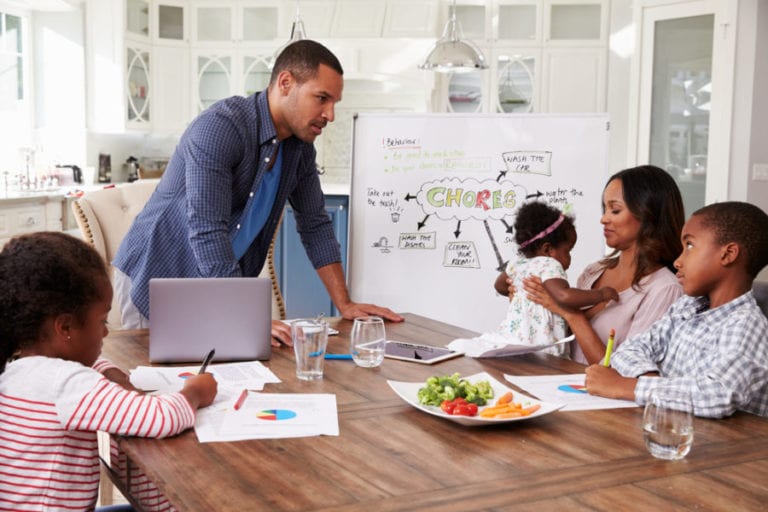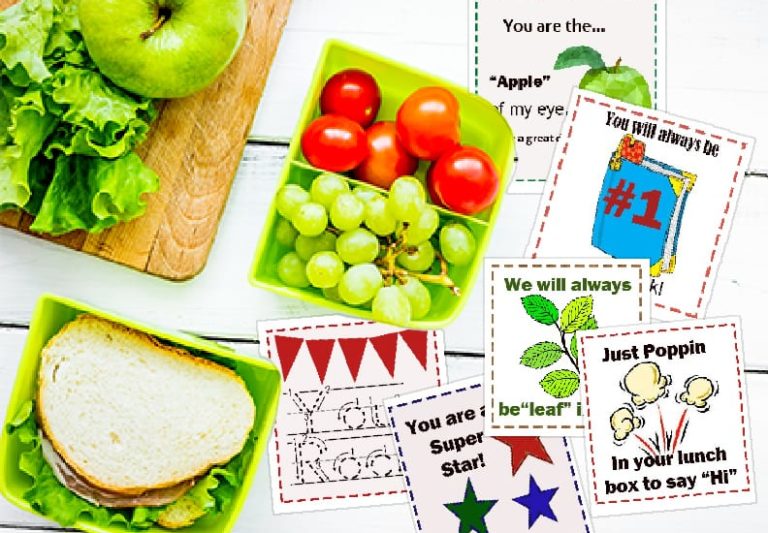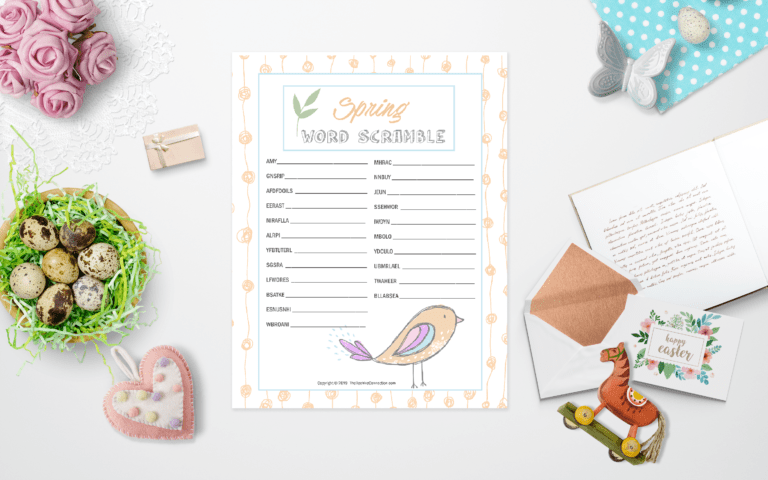15 FREE Family Activities in Your Local Community
Disclosure: This post may contain affiliate links, meaning I may get a small commission if you decide to make a purchase through my links, at no cost to you.
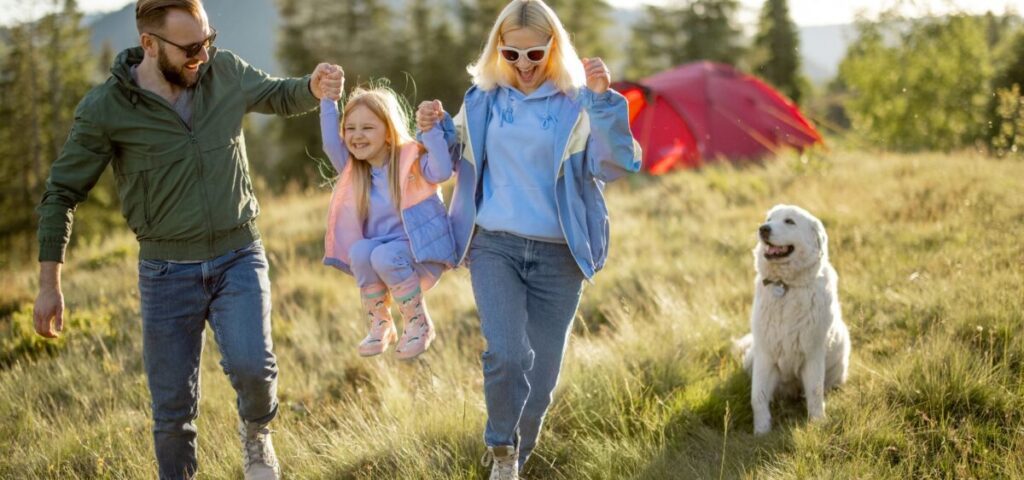
15 Free Family Activities in Your Local Community
Hey there, fellow parents and guardians! Are you looking for Free family activities in your local community to entertain the whole family without emptying your wallet? You’re in luck!
Did you know that the average American family spends over $3,000 per year on entertainment? Yikes! But don’t worry – I’ve got you covered with 15 fantastic, free activities right in your local community that are sure to save money. Let’s dive into these budget-friendly adventures that’ll have everyone smiling (and your bank account thanking you)!
1. Explore Local Parks and Nature Trails for FREE Family Activities in Your Local Community
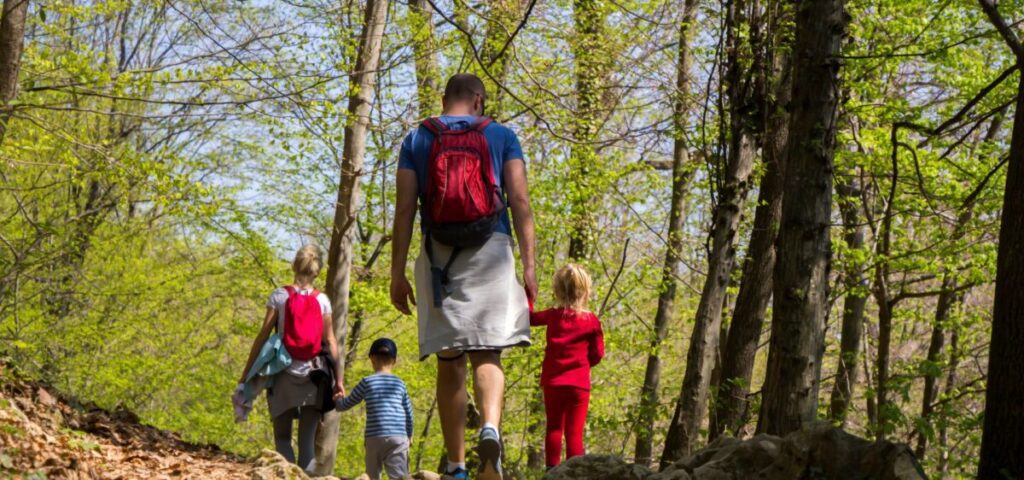
When we looked for free local family activities, we didn’t realize how many trails we had in our city. Our city has wide trails for biking, running, and walking. We love exploring to find out where those trails lead. The local parks with splash pads are always a hit.
Discover hidden gems in your community’s park system
You know, I used to think I knew all the parks in our area. Boy, was I wrong! It wasn’t until my kids started complaining about going to the “same old playground” that I realized we needed to branch out.
So, one Saturday morning, I decided to be spontaneous (which, let me tell you, is not my strong suit with four kids). I packed up some snacks, threw a few balls in the car, and told the kids we were going on an adventure. Their eyes lit up like it was Christmas morning!
We ended up discovering this amazing little park tucked away in a neighborhood we’d never explored before. It had this cool natural playground with logs to climb on and a little stream where the kids could splash around. I felt like I’d struck gold!
Since then, I’ve made it my mission to uncover all the hidden park gems in our community. I’ve found that local Facebook groups are a goldmine of information. Parents are always sharing their favorite spots, and I’ve learned about so many places I never knew existed.
But let’s be real – not every park adventure is a winner. There was this one time we drove 30 minutes to check out a new trail, only to find out it was closed for maintenance. Talk about a bunch of grumpy kids (and an even grumpier mom)! But you know what? Even that turned into a lesson about flexibility and making the best of situations.
Benefits of spending time in nature for family bonding

Getting my family out into nature hasn’t always been a walk in the park (pun totally intended). There were times when I thought it’d be easier to herd cats than to get everyone out the door. But man, the benefits have been worth every “I’m tired” whine and “Are we there yet?” question.
First off, there’s something about being in nature that just… calms everyone down. I remember once when my two oldest were in the middle of a epic sibling rivalry phase. I swear, they could argue about the color of the sky. But we went for a hike, and suddenly they were working together to spot different types of birds. It was like magic!
According to the American Psychological Association, spending time in nature can reduce stress, improve mood, and enhance cognitive function. And let me tell you, I’ve seen it firsthand. My kids seem to sleep better after a day outdoors, and I definitely feel less frazzled.
But the real kicker? The conversations we have when we’re out in nature. Without the distraction of screens (and yes, that includes my own phone), we actually talk. Like, real conversations about hopes and dreams and fears. It’s in these moments that I feel like I’m really getting to know my kids as people, not just as the little tornados that mess up my house.
And don’t even get me started on the physical benefits. The CDC recommends children get at least 60 minutes of physical activity daily, and let me tell you, a good nature walk or a game of tag in the park takes care of that real quick. Plus, it’s way more fun than gym class (don’t tell their PE teacher I said that).
Tips for making the most of your park visit (e.g., picnics, scavenger hunts)
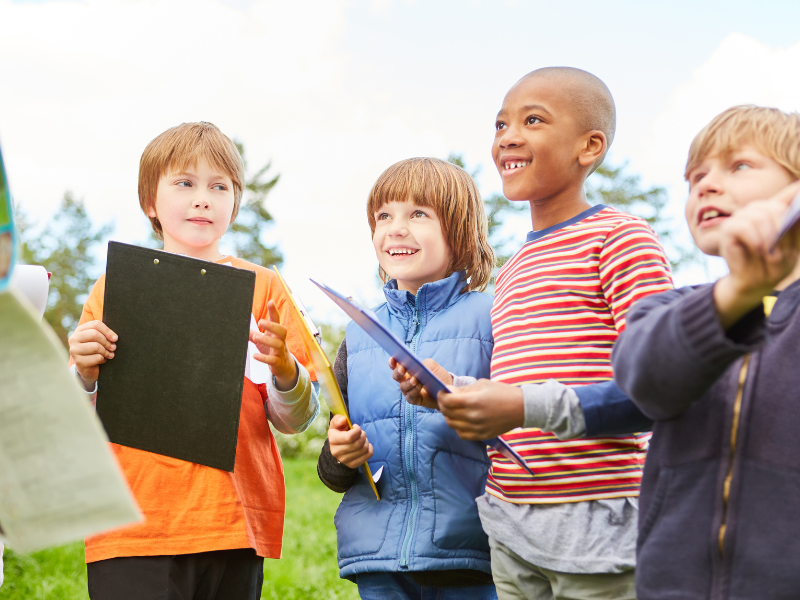
Alright, so you’re sold on the whole park thing, but maybe you’re thinking, “Okay, but what do we actually DO there?” Don’t worry, I’ve got you covered. After countless park visits (some more successful than others), I’ve got a few tricks up my sleeve.
First up: picnics. But not just any picnics. I’m talking themed picnics. Try a “color picnic” where everything is, let say…green. The kids will have a blast trying to find green foods, and it is a sneaky way to get them to eat some veggies. Win-win!
Scavenger hunts are another go-to. I usually make up a list before we go, with things like “find a Y-shaped stick” or “spot a bird’s nest.” It keeps the kids engaged and turns a simple walk into an adventure. Pro tip: bring a small bag for collecting treasures, but make sure to leave nature as you found it!
Oh, and here’s something I learned the hard way: always, ALWAYS bring extra socks and shoes. Trust me on this one. There’s always one kid who’ll find the only mud puddle in a five-mile radius.
Nature art is another fun activity. We collect leaves, pebbles, and sticks to make faces or animals on the ground. It’s like a mandala, but messier and with more giggles. Plus, it’s a great way to teach kids about ephemerality – big word, I know, but basically it means enjoying something in the moment without needing to keep it forever.
And let’s not forget about good old-fashioned games. Frisbee, catch, even hide-and-seek (in safe areas, of course). One time, we brought a kite and spent hours trying to get it airborne. We failed miserably, but the laughs we had trying were worth it.
Lastly, don’t underestimate the power of just… being. Some of our best park visits have been when we’ve had no plans at all. We just exist in nature, climb trees (safely!), and let our imaginations run wild. It’s in these unstructured moments that I’ve seen my kids’ creativity really shine.
Remember, the goal isn’t to have a perfect, Instagram-worthy outing every time. It’s about spending time together, getting some fresh air, and maybe learning a thing or two along the way. So pack some snacks, grab a ball, and get out there. Your local parks are waiting to be explored!
2. Attend Free Community Events and Festivals

How to find upcoming events in your area
Let me tell you, finding free events used to be like searching for a needle in a haystack. I’d hear about awesome festivals days after they happened, and boy, did that burn my biscuits! But over the years, I’ve learned a thing or two about staying in the loop.
First things first, social media is your best friend when it comes to event hunting. I follow our city’s official pages on Facebook and Instagram, and let me tell you, it’s been a game-changer. They’re always posting about upcoming events, and I’ve snagged some real gems this way.
Like that time we stumbled upon a free outdoor movie night in the park – the kids still talk about watching “The Lion King” under the stars!
But here’s a pro tip: don’t just follow the main city page. Look for local community groups too. I saw a “Moms of [Our City]” group, and was a goldmine of information. These folks are always sharing hidden gems that don’t always make it to the official announcements.
Now, if you’re old school like me (or when your phone decides to take an impromptu swim in the kiddie pool), good old-fashioned bulletin boards are still a thing. I make it a habit to check the ones at our local library and community center whenever we’re there. That’s how we found out about a free puppet show that had my youngest absolutely mesmerized.
Oh, and don’t forget about your local newspaper! I know, I know, who reads newspapers anymore, right? But trust me on this one. Many local papers have an events section on their website, and it’s often more comprehensive than you’d think. Plus, it’s a great way to support local journalism.
Lastly, and this might sound a bit out there, but chat with your neighbors! I struck up a conversation with a neighbor and she told me about this amazing Oktoberfest I’d never heard of. It turned into one of our favorite family adventures!
Types of FREE Family Activities in Your Local Community (e.g., concerts, cultural celebrations)
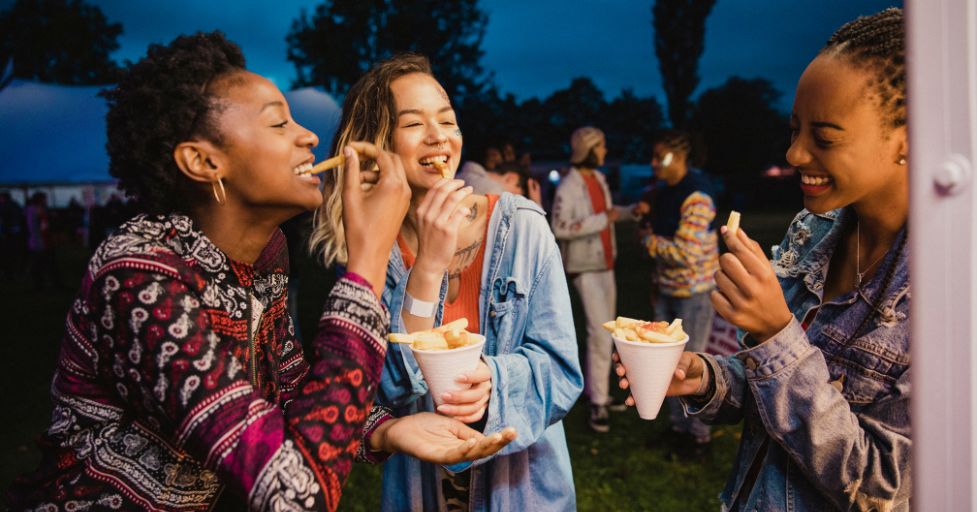
Alright, so you’ve got your event-finding strategy down pat. But what kinds of events should you be on the lookout for? Let me break it down for you based on what’s been a hit with my brood.
First up, concerts. And I’m not just talking about big-name bands (although if you can snag free tickets to those, more power to you!). I’m talking about local bands playing in the park, student orchestras showcasing their skills, or even that guy who plays the guitar in the town square. My kids have discovered some pretty cool music this way, and it’s broadened their horizons beyond the Baby Shark song (hallelujah!).
Cultural celebrations are another goldmine of free fun. We’ve been to everything from Chinese New Year festivals to Oktoberfest celebrations (minus the beer for the kiddos, of course). It’s like taking a trip around the world without the jet lag or passport hassles.
Plus, it’s a great way to teach the kids about different cultures. Just be prepared for some interesting conversations about why we can’t have a pet dragon like in the Chinese parade.
Art fairs are another favorite FREE Family Activities in Your Local Community. Now, I’m no Picasso, and my stick figures have been mistaken for abstract art more than once.
But there’s something magical about watching artists at work. Many of these fairs have free hands-on activities for kids too. Fair warning though: you might end up with some, uh, interesting artwork to display on your fridge.
Don’t overlook educational events either. Our local science museum hosts free stargazing nights once a month, and let me tell you, there’s nothing quite like watching your kid’s face light up when they see Saturn’s rings for the first time. It’s almost as bright as the stars themselves!
Oh, and seasonal events are always a hit. Apple festivals in the fall, holiday light displays in winter, spring flower shows – you name it, we’ve probably been there.
These events often have free activities for kids, like face painting or craft stations. Just be prepared for the inevitable “Can we go apple picking every weekend?” requests.
Making the most of festival experiences as a family
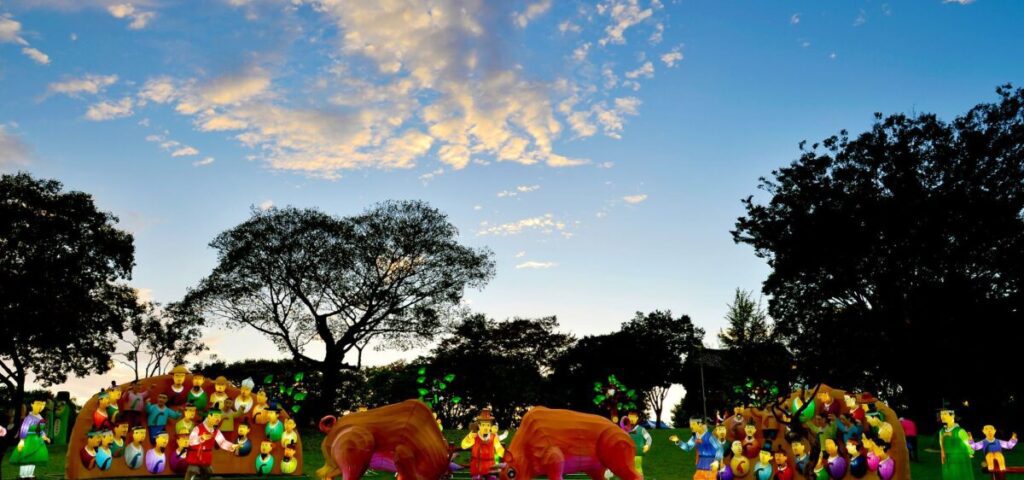
Now, attending these events with kids in tow can sometimes feel like herding cats. But over the years, I’ve picked up a few tricks to make these outings more fun and less… chaotic.
First off, timing is everything. I learned this the hard way after attempting a mid-afternoon festival in the middle of summer. Cue meltdowns, sunburns, and a vow to never repeat that mistake.
Aaim for mornings or early evenings when the kids are fed, rested, and the sun isn’t trying to melt us into puddles.
Speaking of food, always, ALWAYS pack snacks. I don’t care if the event promises free food – bring snacks. Nothing derails a fun outing faster than hangry kids (or hangry parents, for that matter).
Keep a stash of granola bars and fruit snacks in your bag at all times. It can save you from many a meltdown.
Here’s a fun idea: turn the event into a scavenger hunt. I make a list of things for the kids to spot – a red balloon, someone wearing a funny hat, a dog doing a trick. It keeps them engaged and observant, and sometimes leads to fun conversations with other festival-goers.
Don’t forget to bring a blanket or some folding chairs. Many outdoor events don’t have seating, and sitting on the ground loses its charm real quick, especially for us, ahem, more seasoned folks. Plus, it gives you a home base if you need to divide and conquer (like when one kid desperately needs a bathroom and the other is mid-face-painting).
Oh, and here’s something I wish someone had told me earlier: it’s okay to not see everything. I used to try to cram in every activity, see every performance, try every craft. You know what that led to? Overwhelmed kids and frazzled parents.
Now, we pick a few must-do activities and let the rest of the day unfold naturally. Sometimes the best memories come from unexpected moments, like impromptu dance parties or fascinating conversations with local artisans.
Lastly, don’t forget to capture the memories! I’m not talking about spending the whole day behind a camera lens, but a few snapshots can be wonderful to look back on.
We started a tradition of taking a family selfie at each event we attend. It’s become a fun record of our adventures, and the kids love looking back at how much they’ve grown.
Remember, the goal is to have fun and make memories together. So what if your kid spends the entire art fair throwing pebbles in the fountain instead of admiring sculptures?
They’re having fun, you’re out as a family, and that’s what really matters. These free events are a chance to explore, learn, and bond without breaking the bank. So get out there and start making some festival memories!
3. Visit Your Local Library for Story Time and Activities
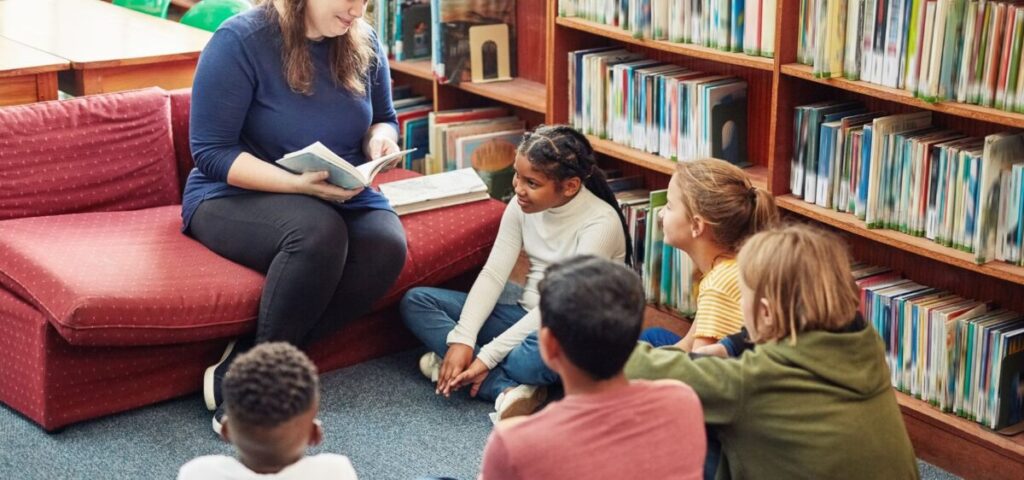
When my kids were little, my favorite family friendly activities near me was a trip to the local library. There are tons of things for kids to do and books to read. The kids will enjoy activities for free.
Overview of library programs for different age groups
Let me tell you, our local library has been a lifesaver more times than I can count. It’s not just about borrowing books anymore (though that’s still pretty awesome). These days, libraries are like community hubs, offering all sorts of cool programs for kids of all ages.
For the littlest ones, there’s usually a “Baby and Me” storytime. I remember taking my youngest when she was just a few months old. There I was, sleep-deprived and barely functioning, and this amazing librarian had a whole room of babies captivated with songs and finger plays. It was like magic!
As they get a bit older, most libraries offer toddler and preschool storytimes. These are usually packed with fun activities – stories, songs, and even simple crafts. When I taught preschool, we went to the local library as part of a yearly field trip.
My students, who used to have the attention span of a goldfish, would sit through these like a little angel. Go figure!
For the school-age crowd, there’s often homework help programs. I can’t tell you how many times these have saved my bacon when it comes to helping with math. (Let’s just say Common Core and I aren’t exactly BFFs.) Some libraries even have coding clubs or STEM workshops. My oldest really loved these free fun activities like chess club etc.
And don’t think libraries forget about the teens! Many have cool programs like anime clubs, gaming nights, or even cooking classes. Teenagers love to volunteer to help with the summer reading program.
Benefits of fostering a love for reading in children

Now, I know in this age of screens and instant gratification, getting kids to read can sometimes feel like pulling teeth. But let me tell you, it’s so worth it.
According to the National Education Association, children who are exposed to reading before preschool are more likely to do well in all facets of formal education. And I’ve seen this play out in my own kids.
My 2nd child was a reluctant reader at first. She’d rather watch paint dry than pick up a book. But we kept at it, making regular trips to the library and letting her choose whatever caught her eye – even if it was just comic books at first. Fast forward a few years, and now I can barely get her nose out of a book long enough to eat dinner!
Reading together when my kids were little became this special bonding time for us. It’s was a chance to slow down, snuggle up, and just be present with each other. Plus, it’s led to some pretty interesting conversations. You’d be amazed at the deep thoughts kids can have about “Green Eggs and Ham”!
But it’s not just about bonding or even academic success. Reading helps develop empathy, broadens horizons, and sparks imagination. You never know where this could lead.
Your son may go through a phase where he is convinced he could build a time machine after reading a sci-fi book. You may not have actually traveled through time, but his creativity and problem-solving skills could get one heck of a workout!
How to participate in library events and borrow books
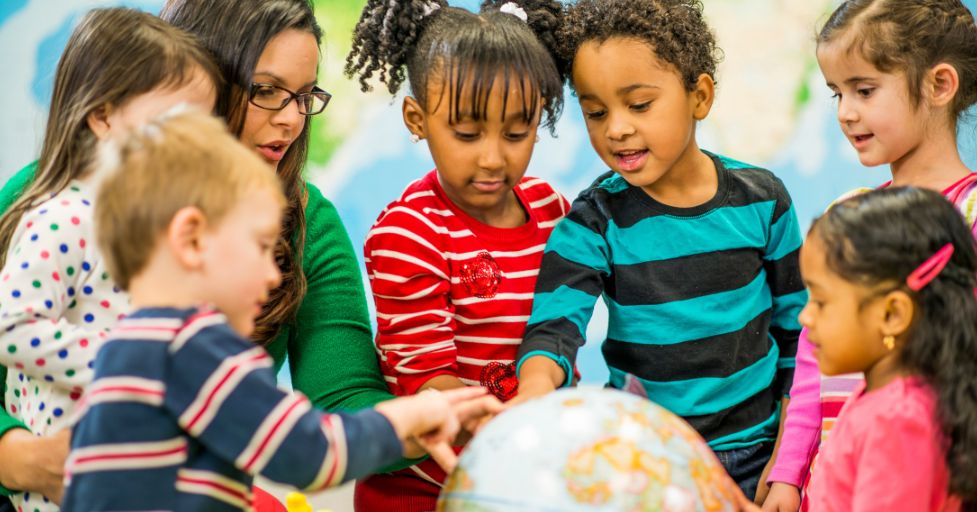
Alright, so you’re sold on the whole library thing. But maybe you’re thinking, “How do I even get started?” Let’s dive in.
First things first, get yourself a library card. It’s usually free and super easy to get. Just bring some ID and proof of address. And here’s a pro tip: get cards for your kids too. My kids felt so grown-up getting their own cards, and it made them more excited about choosing books.
Now, about those events. Most libraries have a calendar of events either on their website or posted in the library itself. Some even have email newsletters you can sign up for. (Just don’t be like me and forget to check your email for weeks on end!)
When it comes to storytimes, don’t be shy about jumping in. I felt a bit awkward at first, especially when they wanted the parents to sing along. But trust me, no one cares if you sound like a dying cat. The kids are having too much fun to notice!
For borrowing books, let your kids lead the way. I used to try to steer my kids towards the “good” books, but I learned that any reading is good reading. If they want to read about the history of slime, so be it. The librarians are usually super helpful if you need recommendations too.
Oh, and don’t stress too much about late fees. Many libraries are doing away with them altogether. But do try to return books on time – it’s a great way to teach kids about responsibility. When my kids were little we had a special “library book basket” at home to keep track of what needed to be returned.
Remember, the library is there for you to use and enjoy. Don’t be afraid to ask questions or try new programs. Who knows? You might just discover your new favorite family activity!
4. Organize a Neighborhood Scavenger Hunt
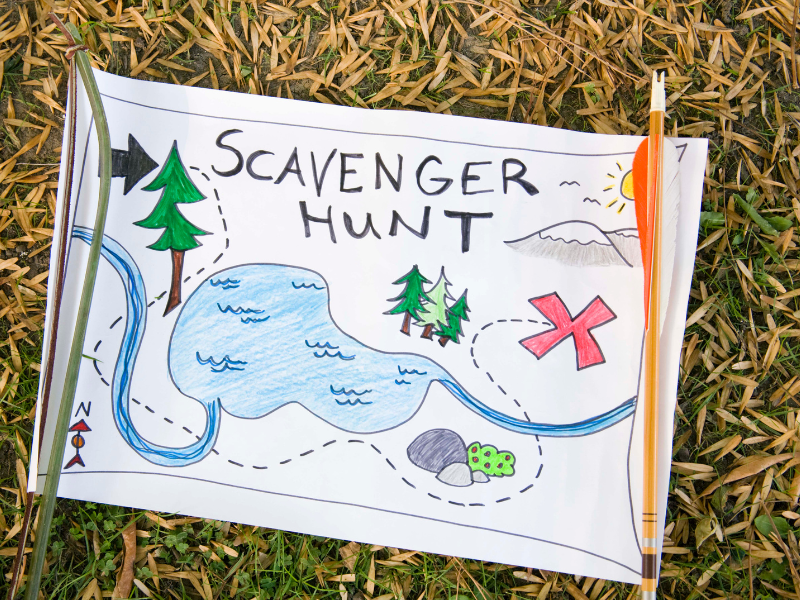
I love activities that are fun for families near me. Have you spent any time with your neighbors? Maybe this is a great time to put together a neighborhood scavenger hunt.
Tips for creating an engaging scavenger hunt for all ages
Okay, let’s talk scavenger hunts. They’re like the Swiss Army knife of activities – versatile, fun, and they keep kids occupied for more than five minutes. Win-win-win!
But creating one that’s fun for everyone from toddlers to teens (and yes, even us adults) can be a bit tricky. Here’s what I’ve learned through trial and error (emphasis on the error part).
First off, keep it simple, especially for the little ones. I once made a hunt so complicated that I couldn’t even follow my own clues. Talk about a facepalm moment! Now, I stick to straightforward items or tasks. For the younger crowd, think along the lines of “Find something red” or “Collect three different types of leaves.”
For older kids and adults, you can ramp up the difficulty. Maybe they need to solve a riddle to find the next clue, or take a specific type of photo. Just remember, the goal is fun, not frustration. I learned this the hard way when I included a math problem in one hunt. Let’s just say it didn’t end well for anyone involved.
Time is another factor to consider. I’ve found that about an hour is the sweet spot. Any longer and you risk meltdowns (and not just from the kids). Any shorter and it feels a bit anticlimactic. But hey, you know your crew best, so adjust accordingly.
And here’s a pro tip: always, ALWAYS have a backup plan. Weather can be unpredictable, items can go missing, and sometimes things just don’t go as planned. Having a few extra clues or a backup indoor version has saved my bacon more than once.
Related:
Ideas for themes and challenges
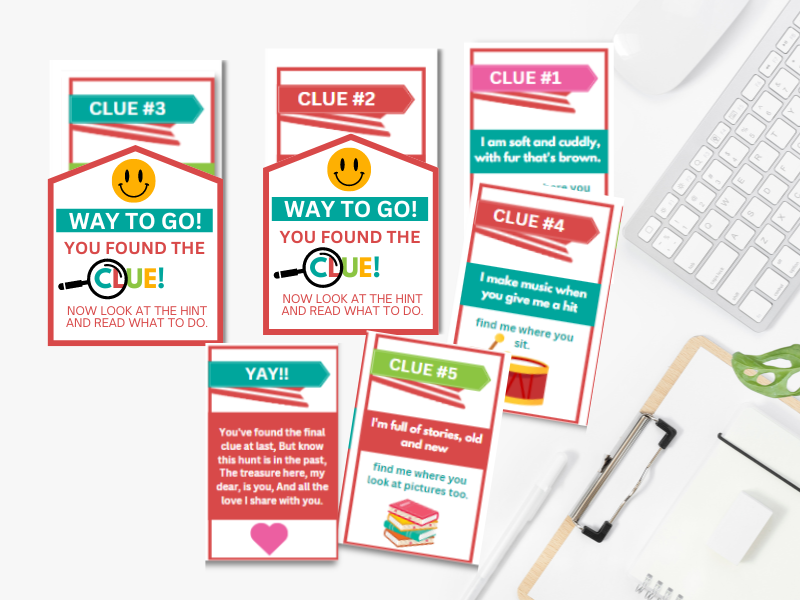
Now, let’s talk themes. Themes can take your scavenger hunt from “meh” to “amazing” faster than my kids can mess up a clean room. And trust me, that’s fast.
One of our favorites is a nature-themed hunt. We did this in our local park, and the kids had a blast finding different types of leaves, spotting birds, and even identifying animal tracks. It was like a mini science lesson disguised as fun. Sneaky, right?
For the holiday season, try a “12 Days of Christmas” hunt. Each clue can be based on a line from the song. Trying to figure out what counted as “eight maids a-milking” can… interesting, to say the least.
Movie themes are always a hit too. Try a Harry Potter-themed hunt once, complete with “potions ingredients” to collect and “spells” to cast. You can even go a bit overboard with the Hogwarts acceptance letters, but seeing the kids’ faces light up will be totally worth it.
For a more educational spin, try a historical theme. We did one based on our town’s history, with clues leading to local landmarks. The kids will a ton, and you will discover some pretty cool spots you didn’t even know existed in your area.
And don’t forget photo challenges! With most kids having access to phones or cameras these days, this can be a fun twist. Have them take photos of specific things, like “something that makes you happy” or “the funniest thing you can find.” The results are usually hilarious and make for great memories.
Download our Indoor Scavenger Hunt Free Printable
How to involve other families and build community connections
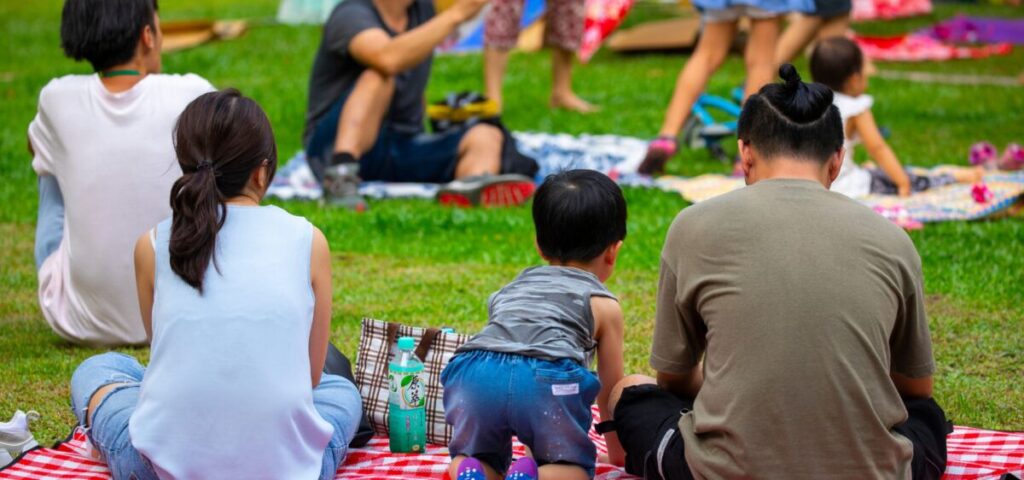
Alright, here’s where things get really fun. Turning your scavenger hunt into a community event. You may worry: What if no one showed up? What if they thought it was lame? But let me tell you, it will be one of the best things you’ve done for your neighborhood.
Start small. Maybe invite just one or two other families to join in. This takes some of the pressure off and lets you work out any kinks before going big. Plus, it’s a great way to get to know your neighbors better. We discovered that the family a few doors down shares our weird obsession with bad pun jokes. Who knew?
When you’re ready to go bigger, social media can be your best friend. Our neighborhood has a Facebook group where I posted about the idea. The response was amazing! People I’d never even met before were excited to join in.
One thing that worked really well for us was having each family contribute a clue or challenge to the hunt. This not only takes some of the planning pressure off you but also gets everyone invested in the event. Just be prepared for some… interesting contributions. (No, Bob from down the street, we can’t include “find a unicorn” as a clue.)
Consider partnering with local businesses too. We’ve had shops agree to be pit stops on our hunts, offering small prizes or just a place to rest and regroup. It’s a win-win – the kids have a blast, and the businesses get some extra foot traffic.
And here’s the really cool part: these hunts have led to all sorts of other community activities. After one particularly successful hunt, someone suggested a neighborhood potluck. Then came a book club, and a walking group. All because we decided to run around the neighborhood looking for random objects!
Remember, the goal here isn’t just to have a fun afternoon (though that’s definitely part of it). It’s about building connections, creating a sense of community, and maybe, just maybe, making the world a little bit better, one scavenger hunt at a time.
So go ahead, take the plunge. Organize that hunt, invite those neighbors, and get ready for some serious fun. Just maybe double-check your clues first. Trust me on this one.
5. Enjoy Free Museum Days and Cultural Institutions
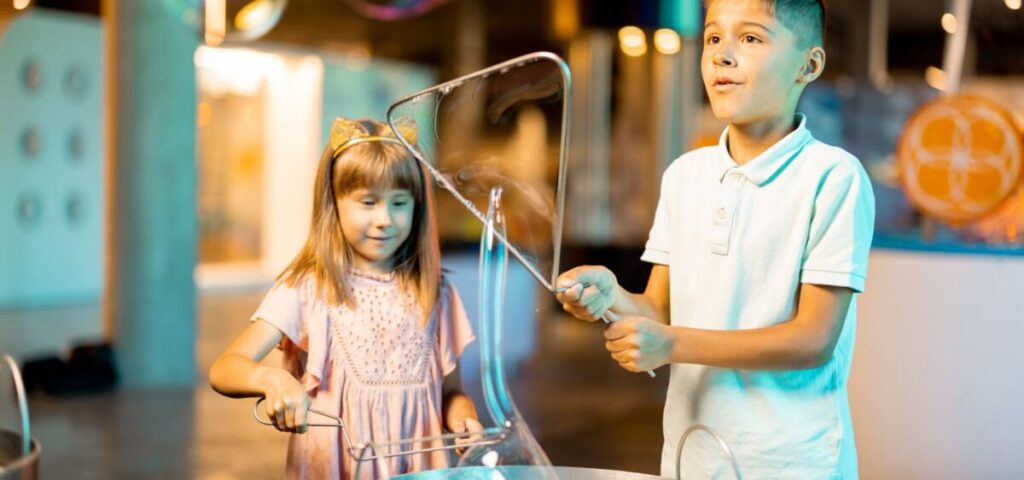
When I don’t have a lot of time to prepare, but I am looking for family fun near me today, I would look no further than museums and cultural institutions. These are the best free family fun attractions near me that are both entertaining and educational.
Researching free admission days at local museums
Let me tell you, when I first started looking into museum visits for the special needs students I work with while using public transportation. I nearly had a heart attack at some of the ticket prices. But then I discovered the magical world of college campus museums and free admission days at other museums, and it was like hitting the jackpot!
Now, finding these free admission museums and free days can sometimes feel like you’re trying to crack some secret code. But don’t worry, I’ve got some tricks up my sleeve. First stop: the museum’s website. Most museums have a section about admission fees, and if you’re lucky, they’ll spell out their free or discounted days right there.
But here’s a pro tip: don’t just stop at the website. I once missed out on a free day because the website wasn’t updated. Now, I always give the museum a quick call to double-check.
Social media can be a goldmine too. I follow our local museums on Facebook and Instagram, and they often post about upcoming free days or special events. Plus, you might stumble upon some cool behind-the-scenes stuff. Did you know that mummies need spa days too? I didn’t until I saw a post about conservation work at our history museum!
Oh, and don’t forget to check if your local library offers museum passes. Our local library doesn’t. But some county library systems do. You will be able to visit places you didn’t know you could, all thanks to your trusty library card.
Lastly, keep an eye out for Bank of America’s “Museums on Us” program. If you have one of their credit or debit cards, you can get free admission to tons of museums on the first full weekend of every month.
Types of museums to explore (art, history, science)

Okay, so you’ve found your free days. Now, what kind of museum should you hit up? Well, in my experience, variety is the spice of life (and the key to avoiding “Mom, I’m bored” whines).
Let’s start with art museums. Now, I’ll be honest, I was a bit nervous about taking special needs students to these at first. I had visions of them trying to add their own “masterpieces” to the exhibits.
But you know what? They surprised me. Some were fascinated by the colors in the paintings, while others got really into learning about different art techniques.
History museums are another favorite. There’s something magical about seeing artifacts from hundreds or even thousands of years ago. We played a game where we tried to imagine what our lives would be like if we lived in different time periods. Let’s just say none of us would last very long without indoor plumbing!
But if you want to see kids’ eyes really light up, take them to a science museum. Hands-on exhibits? Check. Cool experiments? Double check. The chance to learn without realizing they’re learning? Triple check! Our local science museum has a section where kids can build and launch their own rockets. I’m pretty sure my son thought he was training to be an astronaut.
Don’t overlook smaller, specialized museums either. We once visited a local telecommunications museum (I know, sounds thrilling, right?). But it turned out to be super interesting! The kids got to use old-fashioned switchboards and send Morse code messages. It was like a time-travel adventure!
Making museum visits interactive and fun for kids
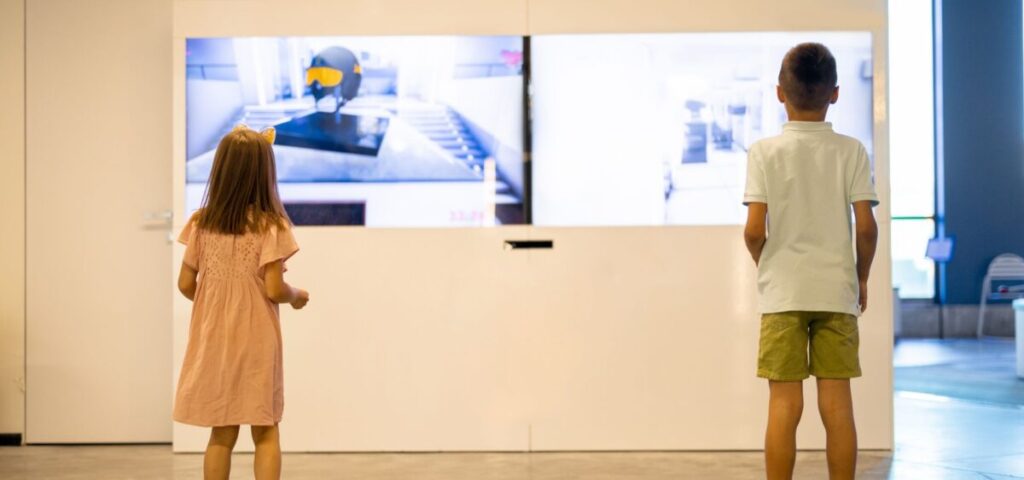
Now, I know what you’re thinking. “Museums are great and all, but how do I keep the kids engaged for more than five minutes?” Don’t worry, I’ve got some tricks up my sleeve.
First up: scavenger hunts. Many museums offer these, but if they don’t, make your own! Before you go, look up what exhibits will be on display and create a list of things for the kids to find. It could be specific artifacts, colors in paintings, or even funny faces in portraits. Our special needs students get so into these, I sometimes have to remind them to actually look at the exhibits!
Another great trick is to play “I Spy.” This works especially well in art museums. Take turns picking out details in paintings or sculptures for others to find. It’s a great way to get kids really looking at the art instead of just glancing and moving on.
For history museums, we like to play “Time Travelers.” We pretend we’ve been transported back to the time period of the exhibit and try to imagine what our lives would be like. What would we eat? What would our jobs be? It leads to some pretty hilarious conversations!
In science museums, challenge your kids to explain how exhibits work. Even if their explanations are way off base, it gets them thinking critically and engaging with the displays. Plus, their theories can be pretty entertaining. According to my daughter, dinosaurs went extinct because they all decided to become vegetarians!
And here’s a biggie: let the kids be the tour guides. Give each child a chance to choose an exhibit and “present” it to the family. They might not get all the facts right, but they’ll be much more invested in learning about their chosen topic.
Lastly, don’t try to see everything in one visit. Museum fatigue is real, folks! We usually pick a few key exhibits to focus on and take plenty of breaks. Many museums have nice outdoor areas or cafes where you can rest and recharge.
Remember, the goal is to foster a love of learning and culture, not to cram in every single exhibit. If your kids leave wanting to come back, that’s a win in my book!
6. Have a Family Game Night at Home
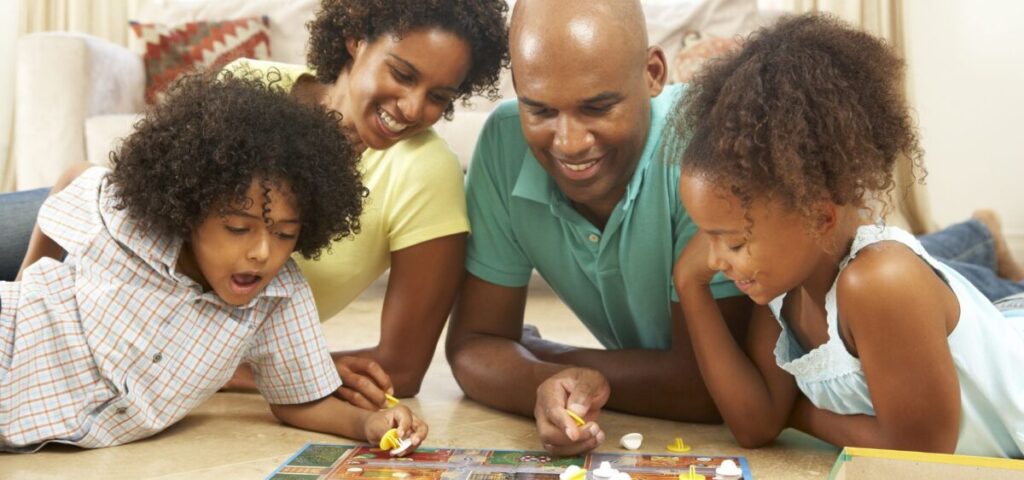
When it comes to free things to do as a family, sometimes home is the best place to be. Especially when your outdoor adventure was canceled due to rain or bad weather.
Selecting age-appropriate board games and card games
Alright, let’s talk about family game night. It’s like entering a gladiatorial arena, but with more snacks and fewer lions. Choosing the right games can make the difference between a fun-filled evening and… well, let’s just say I’ve had to break up a few Dominion-induced sibling rivalries in my time.
Related:
Super Fun Game Night Ideas for the Whole Family
Epic Outdoor Games Night Ideas
When it comes to picking games, I’ve learned (the hard way) that age-appropriate doesn’t always mean boring for the adults. There are tons of games out there that are fun for all ages. Uno, for instance, is simple enough for younger kids to grasp but still entertaining for older ones (and us parents too!).
For the littler ones, games like Candy Land or Chutes and Ladders are great. They’re easy to understand and help with basic skills like counting and color recognition. Plus, there’s something adorable about watching a toddler get ridiculously excited about moving their piece on the board.
As kids get older, you can introduce more complex games. Settlers of Catan has been a hit with older kids. It teaches resource management and negotiation skills, all while they think they’re just trying to build the biggest empire. Sneaky education for the win!
Card games are fantastic too. We love Sushi Go! – it’s quick to learn, fun to play, and the cards are just too darn cute. Plus, it’s helped my picky eater become more open to trying sushi in real life. Who knew?
And let’s not forget about cooperative games. Pandemic has been a favorite lately (maybe a little too on-the-nose given recent events, but hey, we’re saving the world!). It’s great for teaching teamwork and strategic thinking.
Remember, the best game is one that everyone enjoys. Don’t be afraid to try new ones or adapt rules to suit your family. We once played Scrabble where made-up words were allowed as long as you could define them. Let’s just say our dictionary got a lot more… creative that night!
Benefits of family game nights for bonding and skill development
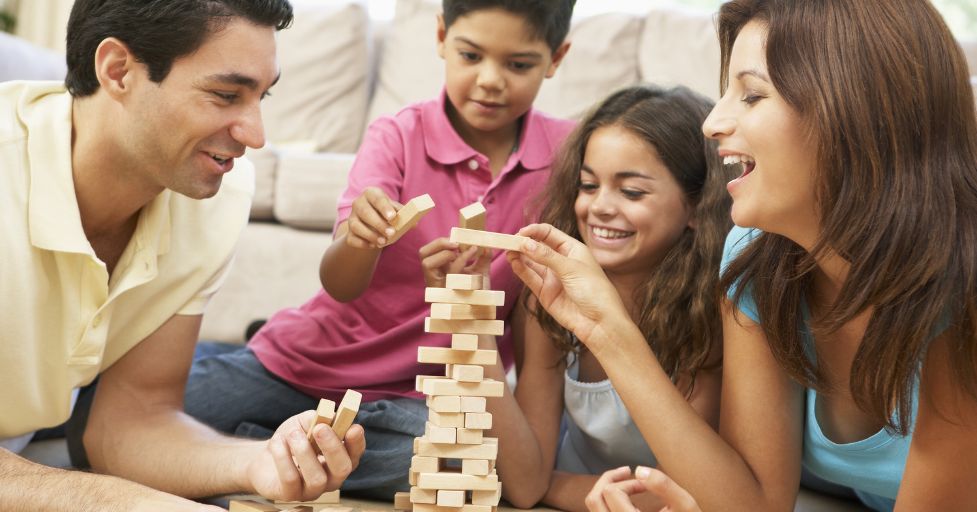
Now, you might be thinking, “Sure, games are fun, but are they really that important?” Let me tell you, the benefits of family game nights go way beyond just having a good time (though that’s pretty important too!).
First off, let’s talk about bonding. In this age of screens and busy schedules, it’s rare to have everyone in the same room, focused on the same activity. Game nights create shared experiences and inside jokes that strengthen family ties. I still giggle every time I remember my husband’s attempt at charades for “octopus.” Let’s just say his arms aren’t quite as flexible as he thought!
But it’s not just about laughs. Games teach important life skills too. According to the American Academy of Pediatrics, board games can help children develop executive function skills like planning, organizing, and decision-making. Who knew that deciding whether to buy Park Place was actually a brain-boosting activity?
For younger kids, games are great for developing fine motor skills and hand-eye coordination. Watching my youngest carefully place her pieces in Jenga has definitely improved her dexterity (and my nerves!).
Older kids benefit too. Strategy games like chess or Risk help with critical thinking and problem-solving. And don’t even get me started on the math skills that come from games like Monopoly or Yahtzee. My kids can calculate probability faster than I can say “roll the dice”!
But perhaps the most important skill games teach is how to be a good sport. Learning to win graciously and lose with dignity are lessons that extend far beyond the game board. Though I’ll admit, I’m still working on the “lose with dignity” part myself. (Note to self: Flipping the Scrabble board is NOT an acceptable way to end a game.)
Ideas for creating a fun atmosphere (e.g., snacks, themed nights)
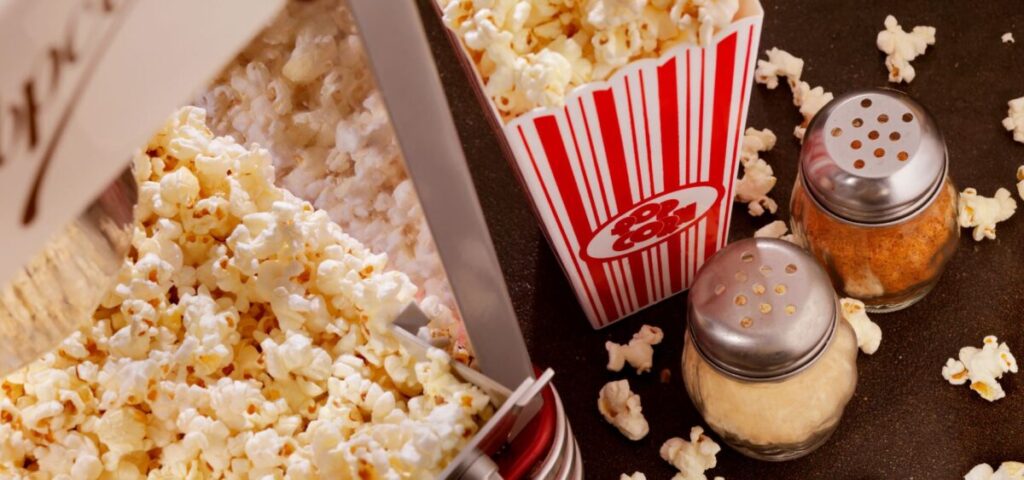
Okay, so you’re sold on the idea of game night. But how do you make it something the kids (and let’s be honest, the adults too) look forward to? It’s all about creating the right atmosphere.
First things first: snacks. In our house, game night snacks are sacred. We usually go for a mix of healthy options (carrot sticks, apple slices) and some treats (popcorn is a must!). Sometimes we theme our snacks to the game we’re playing. Gummy worms for Pictureka? Pretzels shaped like mustaches for Guess Who? You bet!
Speaking of themes, themed game nights can be a blast. We’ve done everything from pirate night (complete with eye patches and a “walk the plank” challenge for the losers) to space night (glow-in-the-dark stars stuck all over the ceiling). The kids get really into it, and it adds an extra layer of fun to the games.
Music can set the mood too. We often have some background tunes playing – nothing too distracting, just enough to add to the atmosphere. Though I’ll warn you, dance breaks during particularly intense Jenga moments are not recommended!
Comfort is key. We pile up pillows and blankets in the living room to create a cozy game den. It’s amazing how much more fun Scrabble is when you’re snuggled up in a blanket fort!
And here’s a pro tip: have a prize for the winner. It doesn’t have to be anything big – in our house, the winner gets to choose the movie for our next family movie night. You’d be amazed at how competitive things get when “Frozen” for the 100th time is on the line!
Lastly, don’t forget to switch things up occasionally. While having a regular game night is great, sometimes spontaneity is the spice of life. Surprise the kids with an impromptu game session on a random weeknight. It’s a great way to turn a boring Tuesday into a memory they’ll cherish.
Remember, the goal is to have fun together. So if the planned game isn’t working out, don’t be afraid to call an audible and switch to something else. Some of our best game nights have been when we’ve abandoned the original plan and just gone with the flow.
So there you have it – your guide to creating epic family game nights.
7. Volunteer Together as a Family
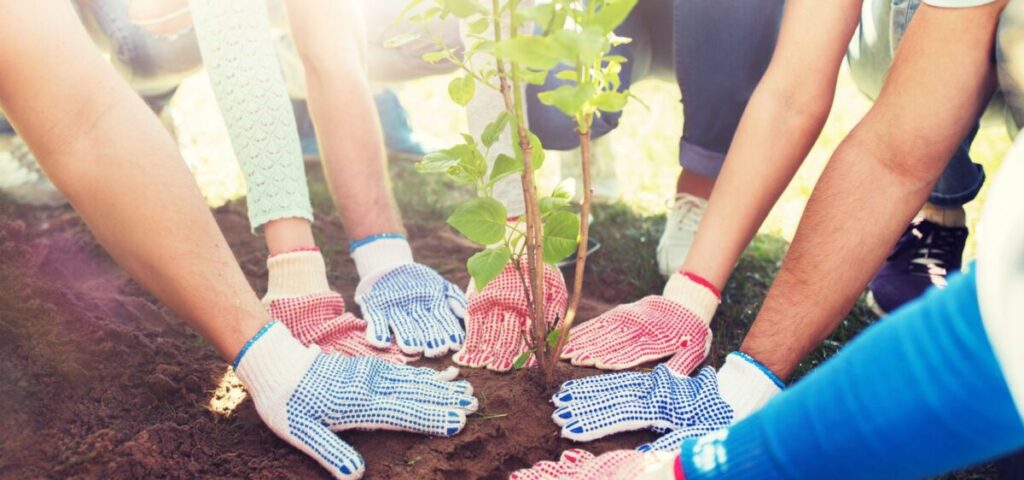
We love cheap days out with the family! Fun with family can be rewarding and memorable by volunteering together. Some of our most memorable experiences have been helping others.
Finding family-friendly volunteer opportunities in your community
You know, when I first thought about volunteering with my kids, I had this vision of us saving the world, one soup kitchen at a time. Reality check: trying to wrangle four kids while ladling out soup is… well, let’s just say it’s not for the faint of heart.
But don’t let that scare you off! There are tons of family-friendly volunteer opportunities out there. You just gotta know where to look.
First stop: your local food bank. Ours is always looking for volunteers to decorate boxes, sort food, fill food orders, and even deliver food to those in need. You may have to make an appointment, because the food bank is the go to place for family volunteering in our community.
Another great resource is VolunteerMatch.org or Justserve.org. You can filter opportunities by age, which is super helpful when you’ve got kids of different ages. We found a cool opportunity to help at an animal shelter through this site. Fair warning: you might end up with a new pet. (No, honey, we can’t adopt ALL the kittens.)
Don’t forget to check with your kids’ schools too. Many schools have partnerships with local organizations for volunteer work. My daughter’s class helped out at a community garden, and now she thinks she’s the next Gordon Ramsay of vegetables.
Oh, and here’s a pro tip: look for one-time or short-term opportunities when you’re just starting out. It’s a great way to test the waters without committing to something long-term.
We did a park clean-up day recently, and it was perfect. The kids had a blast, we did some good, and no one got sunburned. Win-win-win!
Benefits of volunteering for children’s development

Let me tell you, volunteering with your kids is like a secret weapon for parenting. It’s not just about doing good (though that’s awesome too). It’s about helping your kids grow into kind, empathetic, and responsible human beings.
According to a study by the Corporation for National and Community Service, kids who volunteer are more likely to have a strong work ethic, higher self-esteem, and better grades. And let me tell you, I’ve seen this play out with my own kiddos.
My 2nd child was not really of fan of getting out there and being social. But after volunteering as a reading buddy for younger kids at the library, her confidence has skyrocketed. Now I can’t get her to stop talking! (Be careful what you wish for, right?)
Volunteering also teaches kids about gratitude and perspective. After we helped pack food boxes at the local food bank, my son stopped complaining about broccoli at dinner. Well, mostly. Baby steps, folks.
It’s also a great way to teach kids about social issues and civic responsibility. When we volunteered to pass out flyers for an election, my kids asked so many questions about how our government works. I felt like I was back in civics class! But seeing them engaged and curious about these big issues? Priceless.
And you know what? It’s not just good for the kids. Volunteering as a family has brought us closer together. There’s something special about working towards a common goal that isn’t just about us. It’s like team-building, but with more feels.
How to make volunteering a regular part of family life

Alright, so you’re sold on the idea of family volunteering. But how do you make it a regular thing without it feeling like a chore? I’ve been there. It took some trial and error, and we are still working on finding a rhythm that works for us.
First off, involve the kids in choosing the volunteer activities. When they have a say in what we’re doing, they’re way more excited about it. We have a family meeting at the start of each month to decide on our volunteer activity. Sometimes it leads to some… interesting suggestions. (No, sweetie, taste-testing ice cream is not a volunteer activity.)
Start small and build up. We began with just one volunteer activity a month. Now we aim for two, but we’re flexible. Life happens, and the last thing you want is for volunteering to feel like a burden.
Make it fun! We often combine our volunteer activities with other family outings. After we help out at the animal shelter, we usually go for ice cream. It gives us a chance to talk about what we did and why it matters, plus… ice cream. Need I say more?
Try to find regular gigs if you can. The regularity helps it become part of a routine, and the kids love seeing the same people each time. It’s like having an extended family.
And here’s a biggie: lead by example. Kids are like little sponges, soaking up everything we do. When they see us excited about volunteering, it becomes the norm for them too.
Lastly, celebrate your efforts! Consider having a “Volunteer Victory” board at home where you can put up photos from your volunteer activities. It’s a great visual reminder of the impact you’re making, and the kids will love showing it off to visitors.
Remember, the goal isn’t to be perfect volunteers. It’s about making a difference, learning together, and hopefully having some fun along the way.
So don’t stress if things don’t always go as planned. That time my son accidentally set off the fire alarm at the senior center? Well, that’s a story for another day!
8. Create Outdoor Art with Sidewalk Chalk
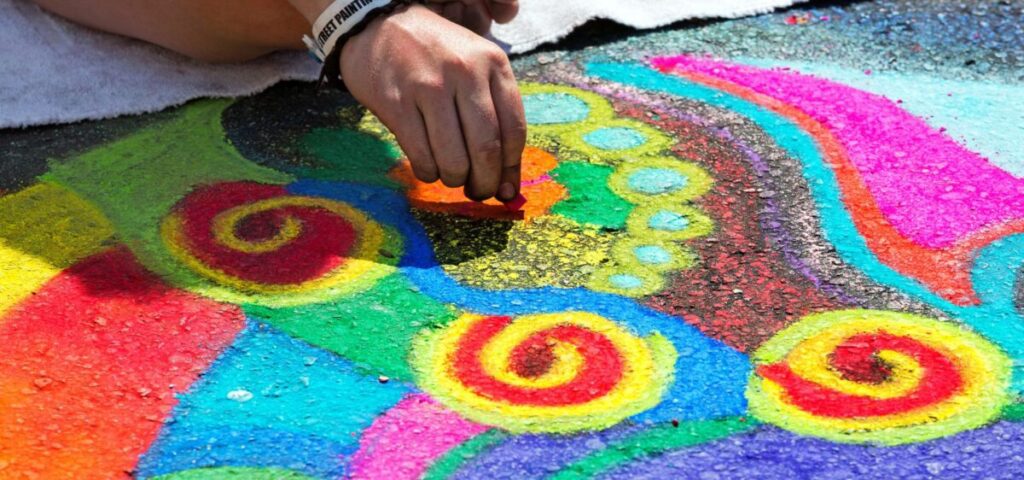
Chalk art is one of our favorite fun FREE things to do with kids. There is virtually no mess, and the kids have amazing creativity that is easily explored on the sidewalks and driveways like none other.
Ideas for sidewalk chalk art projects
Okay, let’s talk sidewalk chalk. It’s like the ultimate canvas for budding Picassos, minus the “Oh no, you drew on the walls again” panic. When we first started our chalk adventures, I thought it was just about drawing hopscotch boards. Boy, was I in for a colorful surprise!
One of our favorite projects is creating “stained glass” on the sidewalk. We use masking tape to create a design, then fill in the spaces with different colors. When you peel off the tape – voila! Instant masterpiece. Fair warning: your neighbors might start expecting you to redecorate their driveways too.
Character shadows are another hit. We trace each other’s shadows at different times of the day, then fill them in with fun designs. It’s like a family time capsule, but way more fun (and less likely to be dug up by the dog).
For the budding scientists, try making chalk paint. Mix cornstarch, water, and food coloring, and you’ve got yourself some sidewalk paint. It’s messier than regular chalk, but the vibrant colors are worth the extra laundry. Just maybe don’t wear your Sunday best for this one.
Oh, and don’t forget about 3D chalk art! With some clever shading and perspective tricks, you can create mind-bending optical illusions. I’ve seen one amazing work of art that looked like there was a giant hole in the sidewalk. It was fun to watch runners avoid the fake hole. Fun times!
For the storytellers in your crew, try creating a chalk comic strip. Each family member can contribute a panel, creating a wacky, collaborative story. Ours usually involve unicorns, spaceships, and inexplicably, tacos. Hey, creativity knows no bounds!
Organizing a neighborhood chalk art festival
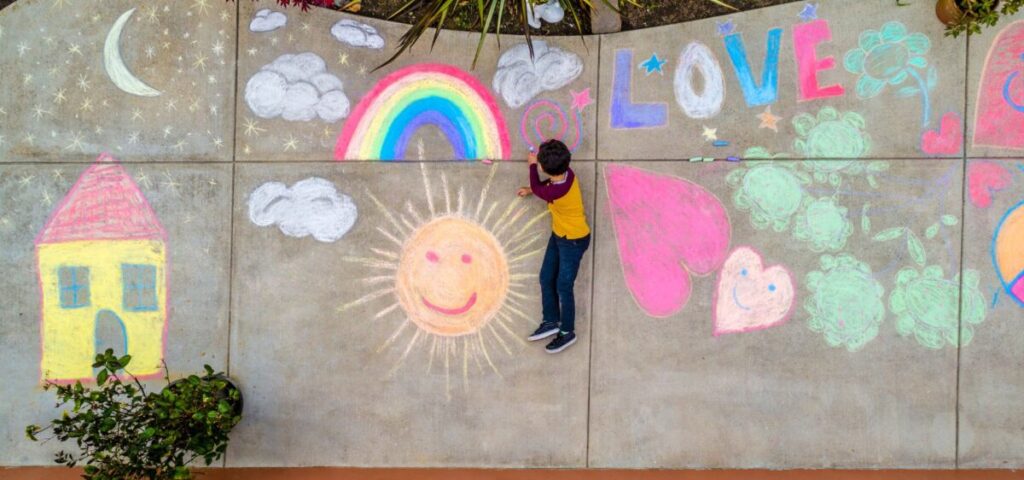
Now, if you really want to level up your chalk game, why not turn it into a neighborhood event? That’s right, I’m talking about a full-blown chalk art festival. Don’t worry, it’s not as daunting as it sounds. Well, mostly.
First things first, check with your local authorities about any permits you might need. Trust me, nothing kills the artistic vibe faster than a visit from the fun police. Been there, done that, got the awkward explanation to the neighbors.
Next, pick a date and spread the word. You can create a Facebook event and put up flyers around the neighborhood. Pro tip: include a rain date. Mother Nature doesn’t always appreciate fine art.
Divide your street or a local parking lot into sections, one for each participating family or group. You can use pool noodles as dividers. Cheap, colorful, and bonus: impromptu sword fights when the art is done!
Don’t forget to have categories for judging. Include wared for “Most Colorful,” “Best Use of Space,” and the crowd favorite, “Most Likely to Make You Go ‘Huh?‘” The prizes can be simple – ribbons and some dollar store trophies.
Consider having a theme. We’ve seen themes like “Under the Sea,” and let me tell you, I never knew there were so many ways to draw a fish. You could also consider “Space,” and well, some of those alien designs can be… creative.
Oh, and don’t forget refreshments! We had a potluck style setup, with each family bringing a snack to share. Nothing fuels creativity like a good sugar rush, right?
Incorporating educational elements into chalk drawings

Now, I know what you’re thinking. “It’s summer! Can’t we take a break from learning?” But here’s the secret: with chalk art, the kids are having so much fun they don’t even realize they’re exercising those brain cells.
One of our go-to educational chalk activities is creating giant math problems. You can draw out huge numbers and symbols, and the kids can hop from number to number to solve the equation. It’s like hopscotch meets math class, minus the groans.
For the history buffs, try recreating famous paintings in chalk. You can do your own version of Van Gogh’s Starry Night once. Let’s just say Vincent probably isn’t rolling in his grave, but the kids can learn a ton about art history and technique.
Geography more your thing? Draw a massive map and have the kids fill in countries, capitals, or landmarks. Warning: may result in spontaneous renditions of “It’s a Small World After All.”
Science experiments are another great way to sneak in some learning. I’ve seen chalk used to track the sun’s movement throughout the day, marking shadow positions at different times. It’s like a sundial, but more colorful and with 100% more driveway coverage.
For the word nerds (like yours truly), try a giant crossword puzzle or word search. It’s a great way to practice spelling and expand vocabulary. Plus, it’s oddly satisfying to fill in those giant squares.
And let’s not forget about nature! We love to trace leaves, flowers, and other natural objects, then label their parts. It’s like a biology lesson, but with more scrapped knees and grass stains.
Remember, the key is to keep it fun. If it starts feeling too much like school, switch gears. The beauty of chalk art is its impermanence – a little water, and you’ve got a clean slate. Kind of like parenting, right?
So grab those chalks, unleash your inner artist, and get ready for some colorful, creative, and sneakily educational fun. Just don’t blame me if your kids start asking to redecorate your living room walls next!
9. Go on a Family Bike Ride or Nature Walk
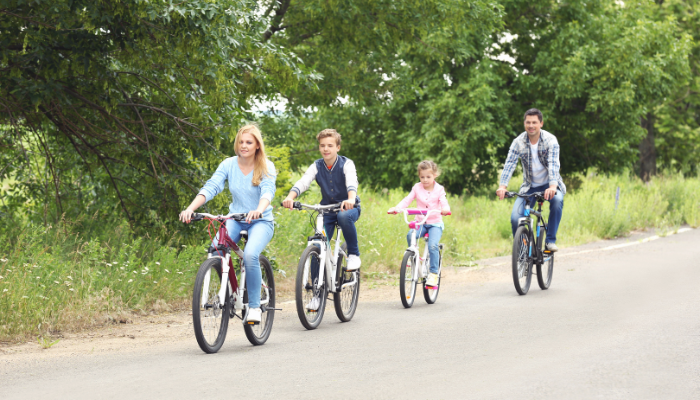
When it comes to fun activities with family that are not only exciting, but also healthy try a family bike ride or a nature walk.
Finding safe biking and walking trails in your area
Let me tell you, when I first decided to take my brood on a family bike ride, I thought it’d be a breeze. You know, like riding a bike… Ha! Turns out, finding a safe trail for a mom and four kids of varying ages and abilities is about as easy as herding cats. On unicycles.
But don’t let that scare you off! With a little bit of research and some trial and error (emphasis on the error part), you can become an expert on finding family-friendly trails.
First stop: your local parks and recreation department website. These folks usually have a goldmine of information about local trails, including difficulty levels and amenities. Trust me, knowing where the nearest bathroom is can be a lifesaver!
I also swear by the AllTrails app. It’s like having a trail guide in your pocket, complete with user reviews. And let me tell you, those reviews are worth their weight in gold. They’ve saved us from many a meltdown-inducing steep hill or “rustic” (read: nonexistent) bathroom situation.
Don’t forget to check out rail trails in your area. These converted railway lines are usually flat, well-maintained, and perfect for families. Just watch out for the occasional overzealous fitness buff treating it like the Tour de France!
And here’s a pro tip: reach out to local biking or hiking groups on social media. These folks usually know all the hidden gems in the area. You may even discover an amazing trail with a secret waterfall halfway through.
Remember, safety first! Always scout out a new trail before bringing the whole family. What looks easy on a map might be a whole different story in real life. Learn from my mistakes – that “family-friendly” trail that turned out to be more suited for mountain goats? Yeah, let’s just say it wasn’t my finest parenting moment.
Tips for making rides and walks engaging for all ages
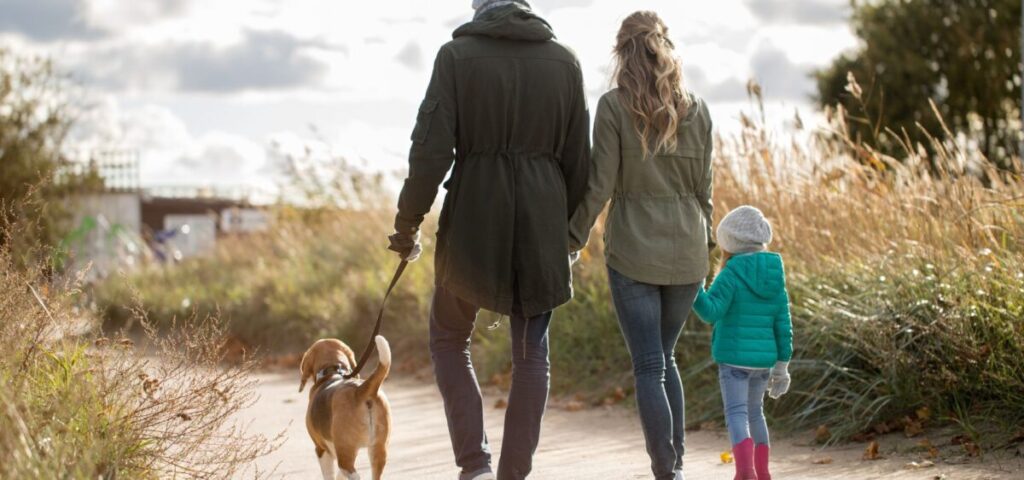
Alright, so you’ve found the perfect trail. Now comes the real challenge: keeping everyone entertained. Because let’s face it, “Are we there yet?” is not a phrase any parent wants to hear on repeat.
One of our favorite ways to keep things interesting is to turn our walks or rides into a scavenger hunt. I make up a list of things to spot – a red leaf, a funny-shaped cloud, a bird’s nest – and the kids go wild trying to find everything. It’s amazing how much more observant they become when there’s a competition involved!
For bike rides, play “Follow the Leader.” Each family member gets a turn to lead the pack and choose the pace. It’s a great way to make sure everyone feels included, and it’s hilarious watching the kids try to keep up with our the little ones zigzag riding style.
Nature bingo is another hit. You can create bingo cards with different plants, animals, or landmarks you might see on your trip. First one to get bingo gets to choose the post-ride treat. Warning: may result in heated debates about whether that was really a hawk or just a really big pigeon.
For the little ones who might get tired easily, incorporate regular stops into our journeys. Call them “expedition breaks.” It’s a chance to rest, have a snack, and maybe do a quick nature craft like leaf rubbings or rock stacking. It breaks up the trip and gives everyone something to look forward to.
Oh, and don’t underestimate the power of a good story. We often make up tales about the places we’re passing. That gnarly old tree? Definitely home to a family of woodland fairies. That oddly shaped rock? Clearly a dragon’s egg. It’s amazing how much further little legs can go when there’s a story spurring them on.
And for those inevitable moments when enthusiasm starts to flag? That’s when you pull out the big guns: silly songs and ridiculous games. A favorite is the “Animal Walk.” Everyone has to move like a different animal for a short distance. Watching dads hop down the trail like a kangaroo is worth it!
Incorporating learning opportunities about local flora and fauna

Now, I know what you’re thinking. “It’s supposed to be a fun family outing, not a science class!” But hear me out. Sneaking in a little learning can actually make your walks and rides even more engaging. And the best part? The kids don’t even realize they’re getting an education!
We started small with a simple plant identification app. The kids love snapping pictures of interesting leaves or flowers and seeing what pops up. It’s like Pokemon Go, but with actual nature. Fair warning: you may end up with a budding botanist on your hands.
Bird watching can be another favorite pastime at outings. Invest in a couple of cheap binoculars and a basic bird guide, and suddenly our walks turned into safaris. The Merlin Bird ID app can be a game-changer too. It can identify birds by sound.
For the more hands-on learners, we do “nature journaling.” Each kid can have a small notebook where they can sketch interesting things they see, write down observations, or even press small leaves or flowers. It’s like a personalized field guide of our adventures. Just be prepared for some… creative interpretations.
We also love to learn about the history of the areas we’re exploring. Many trails have informational plaques along the way, and we make it a game to see who can spot them first and share an interesting fact. Did you know that some of our local trails used to be Native American trading routes? History comes alive when you’re walking in the footsteps of those who came before.
And let’s not forget about geology! Turn rock hunting into a full-blown hobby. The kids love finding interesting stones and can use a rock identification guide to learn about what they’ve discovered. It’s all fun and games until someone tries to bring home a boulder as a “pet rock.”
But perhaps the most valuable lesson we’ve learned on our outdoor adventures is about conservation. We always bring a small trash bag and make it a mission to leave the trail cleaner than we found it. It’s sparked some great conversations about our impact on the environment and what we can do to protect these beautiful spaces.
Remember, the goal isn’t to turn your family outing into a lecture. It’s about fostering curiosity and a love for the natural world. So keep it light, keep it fun, and don’t be afraid to admit when you don’t know something. After all, learning together is what it’s all about!
10. Attend Free Workshops at Local Stores

Local craft stores have fun workshops included in our list of fun things to do for free. Who doesn’t love watching a demonstration on making a DIY pillow case or tree ornament.
Researching free workshops at craft stores, home improvement centers, etc.
Okay, let’s talk about one of my favorite discoveries as a mom: free workshops at local stores. It’s like hitting the jackpot – free entertainment AND education for the kids? Sign me up! But finding these hidden gems can sometimes feel like you’re on a treasure hunt without a map.
First stop: craft stores. Places like Michaels and Joann Fabrics often have free or low-cost workshops for kids. I stumbled upon this goldmine when I was desperately searching for something to do for the special needs young adults I work with.
It can become a regular part of your routine. Pro tip: sign up for their email newsletters. Yes, your inbox will be flooded with coupons, but you’ll also get the scoop on upcoming workshops.
Home improvement stores are another unexpected source of fun activities to do. Home Depot and Lowe’s frequently offer workshops where kids can build simple projects.
Don’t overlook your local library either. Many libraries partner with local experts to offer workshops on everything from origami to coding. We once saw a workshop on making recycled paper that was messy, fun, and educational all at once. Just be prepared for your house to be filled with slightly lumpy homemade paper for weeks afterward.
And here’s a tip I wish I’d known earlier: check out local museums and cultural centers. Many offer free weekend workshops as part of their community outreach programs.
We’ve seen everything from pottery classes to science experiments this way. It’s like sneaking vegetables into dessert – the kids are having so much fun they don’t realize they’re learning!
One last nugget of wisdom: don’t forget to check social media. Many stores and organizations announce their workshops on Facebook or Instagram first.
Benefits of hands-on learning experiences for children

Now, you might be wondering, “Is it really worth the effort to drag my kids to these workshops?” Let me tell you, the benefits have blown me away. It’s not just about keeping them busy (though that’s certainly a bonus). These hands-on experiences are like miracle grow for little brains.
According to the American Academy of Pediatrics, hands-on learning experiences promote cognitive development in children. Ive’ seen kids who used to struggle with math, have an “aha” moment during a workshop on building geometric shapes. Suddenly, those abstract concepts became real and tangible. It was like watching a light bulb go off over her head!
These workshops also boost creativity and problem-solving skills. I’ll never forget the time a student’s popsicle stick bridge collapsed during a engineering workshop. Instead of getting frustrated, he saw it as a challenge. He rebuilt it, stronger this time, with a look of determination that would put most adults to shame. Talk about a life lesson!
Social skills get a workout too. These workshops often involve teamwork or sharing materials. It’s been amazing to watch my students come out oftheir shells and make new friends over a shared love of glitter glue. (Side note: Glitter glue is the bane of my existence. It’s like the glitter gets everywhere AND refuses to dry. But I digress.)
Perhaps the most valuable benefit I’ve seen is the boost in confidence these workshops provide. There’s something incredibly empowering about creating something with your own two hands.
I’ve watched my kids transform from hesitant beginners to proud craftspeople, eager to show off their latest creations. It’s enough to make this mama’s heart burst with pride.
And let’s not forget the family bonding aspect. Participating in these workshops together has given us shared experiences and inside jokes. Good times, good times.
How to prepare for and make the most of workshop attendance
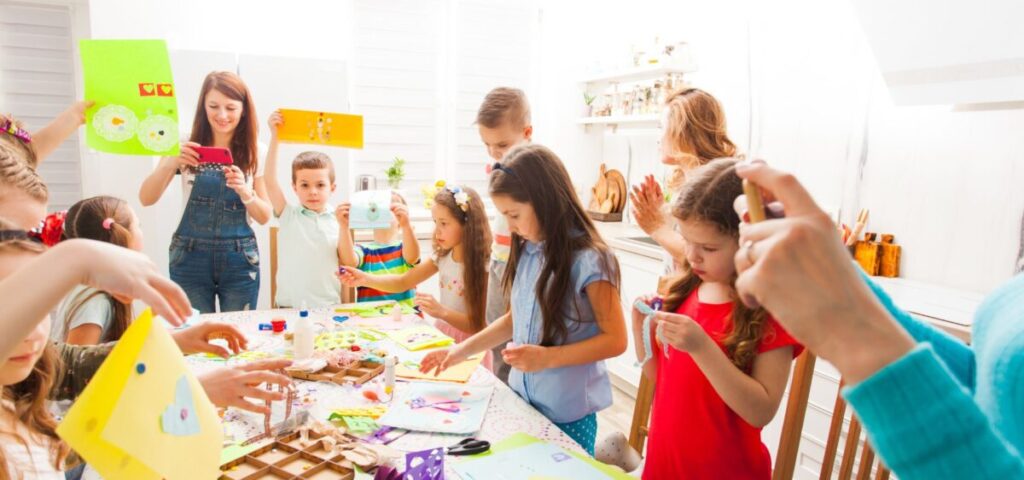
Alright, so you’re sold on the idea of workshops. But how do you make sure they’re a hit and not a headache? Here are some tips I’ve learned (often the hard way) to make the most of these experiences.
First things first: always, ALWAYS register in advance if that’s an option. Popular workshops fill up faster than you can say “free craft supplies.” I learned this the hard way when we showed up to a slime-making workshop only to find it full. Cue the disappointed faces and the frantic Google search for “how to make slime at home.” (Spoiler alert: it’s messy. So, so messy.)
Read the workshop description carefully. Age recommendations are there for a reason. I’ve seen younger kids at a workshop meant for older kids. Let’s just say her dream catcher looked more like a nightmare tangle. Always double-check that the activity is age-appropriate.
If possible, familiarize your kids with the topic beforehand. You can usually read a pamphlet or watch a quick video related to the workshop theme. It gets them excited and gives them some background knowledge. Plus, it makes them feel like experts when they can answer the instructor’s questions!
Pack snacks. Nothing derails a fun workshop faster than a hangry kid. I always have a stash of granola bars and water bottles in my bag. It’s saved us from many a mid-craft meltdown.
Dress for mess. Even if the description doesn’t mention it, assume there will be paint, glue, or some other mess-making material involved. I’ve lost count of the number of “good” blouses that have fallen victim to craft carnage.
Bring a positive attitude and be prepared to get involved. Your enthusiasm is contagious! If you’re excited about the project, your kids will be too. And don’t be afraid to roll up your sleeves and join in. Some of our best memories involve the whole family creating together.
Finally, manage your expectations. Not every project will be a masterpiece, and that’s okay. The goal is to have fun and learn something new. So what if your kid’s clay pot looks more like a lumpy ashtray? It’s the experience that counts!
Remember, these workshops are about more than just the finished product. They’re about exploring, learning, and spending quality time together. So grab those craft smocks, slap on a smile, and get ready for some hands-on fun. Just maybe leave the white shirts at home, okay?
11. Have a Backyard Camping Adventure
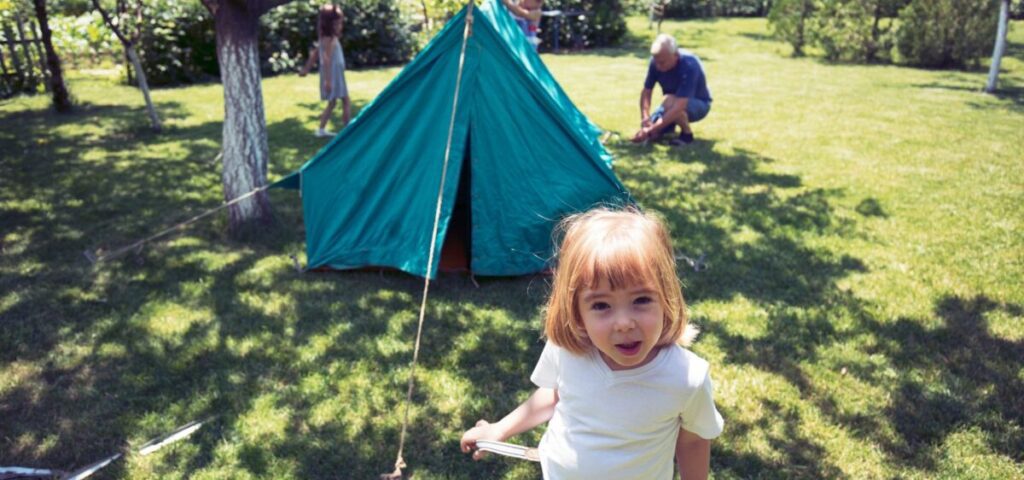
Other free things to do with family at home is outdoor backyard and camping adventures.
Setting up a fun camping experience in your own backyard
Let me tell you, when you first suggest a backyard camping adventure to your kids, they may look at you like you’ve grown a second head. “Camping in the backyard? But Mom, that’s so boooring!” Oh, how wrong they will be!
First things first, let’s talk about the tent. If you’re anything like me, setting up a tent is about as easy as solving a Rubik’s cube blindfolded. But here’s a pro tip: do a trial run before the big night. Trust me, trying to figure out which pole goes where in the dark, with four impatient kids bouncing around, is not fun.
Now, let’s talk about sleeping bags and blankets. Air mattresses are great, but don’t forget to bring out lots of blankets and pillows. Kids have this magical ability to make even the softest surface feel like a bed of nails. Plus, there’s something cozy about creating a nest of blankets. Just be prepared for the inevitable blanket fort that will sprout up in your tent.
Oh, and don’t forget the all-important camping snacks! S’mores are a must, of course. But if you’re not keen on starting a fire in your backyard (wise choice), a microwave version works just fine.
We’ve even made them with over the stove. Desperate times call for desperate measures, am I right?
Ideas for camping activities (stargazing, storytelling, s’mores)

Alright, so you’ve got your tent set up and enough snacks to feed a small army. Now what? Time for some good old-fashioned camping activities!
Stargazing is always a hit. A cool app called Star Walk helps you identify constellations. It’s like having a personal astronomer in your pocket! Fair warning though: be prepared for some creative constellation naming from the kids. According to some kids, there’s definitely a “Giant Pizza Slice” constellation up there.
Storytelling is another camping staple. We like to play a game called “Story in the Round” where each person adds a sentence to the story. It starts out normal enough, but by the end, we’ve usually got a tale involving ninja unicorns saving the world from an invasion of sentient broccoli. Hey, creativity knows no bounds!
And let’s not forget about s’mores some more. Now, I know I mentioned the stove top version earlier, but if you’re feeling adventurous (and have a safe spot), a small fire pit can be magical. Just remember to check local regulations first. We learned that lesson the hard way when our neighbors thought we were reenacting scenes from “Apocalypse Now” in our backyard.
For the more active kiddos, a nighttime scavenger hunt can be a blast. Arm them with flashlights and a list of things to find. Glow-in-the-dark items are especially fun for this. Just maybe give the neighbors a heads-up first.
Tips for creating a memorable “staycation” experience
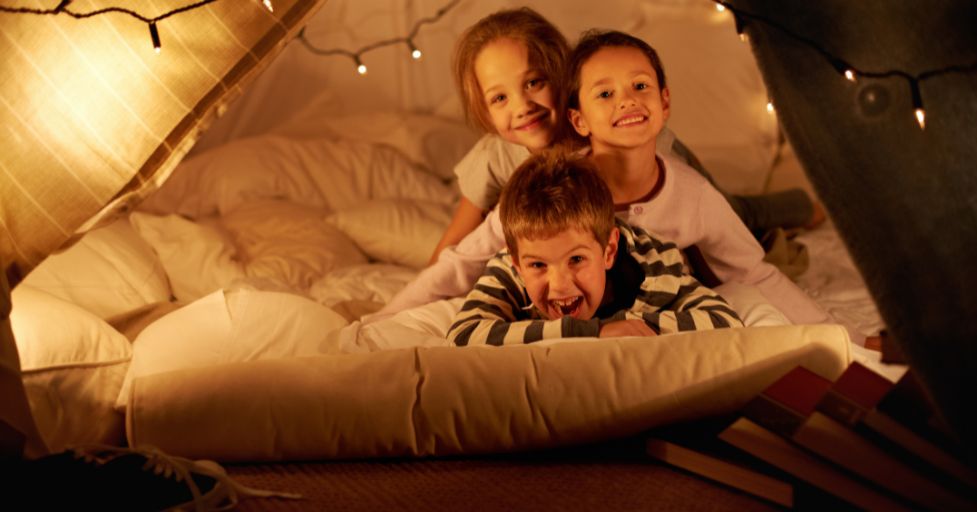
Now, I know what you’re thinking. “It’s just the backyard. How special can it really be?” Let me tell you, with a little creativity, your backyard can become a whole new world!
First off, ban all electronics. I know, I know, it sounds cruel. But trust me, once the initial withdrawal symptoms wear off, the kids will start using this amazing thing called their imagination. It’s like magic!
Create a special “camping menu” for your meals. We like to prep foil packet dinners that we can heat up on a grill or in the oven. The kids love customizing their own packets, and it feels way more “camping-y” than our usual weeknight dinners.
Don’t forget about breakfast! There’s something exciting about waking up in a tent and smelling pancakes cooking. You will love a tradition of pancakes on your camping mornings.
And here’s a tip: create a “camping passport” for each family member. Include activities they need to complete to earn “stamps” – things like identifying three constellations, telling a spooky story, or trying a new camping food. It adds a fun challenge to the experience.
Lastly, remember that the goal is to create memories, not Instagram-perfect moments. So what if your tent looks like it was set up by a tornado? Or if your s’mores end up more “charred” than “golden brown”? Those imperfect moments often become the funniest stories later on.
According to a study by the Family Holiday Association, 49% of people said their happiest memory is that of a family vacation. Who says that vacation can’t be in your own backyard? So grab those sleeping bags, dust off your ghost stories, and get ready for an adventure. Just maybe keep the bug spray handy. Trust me on that one!
12. Visit Local Farms or Farmers Markets
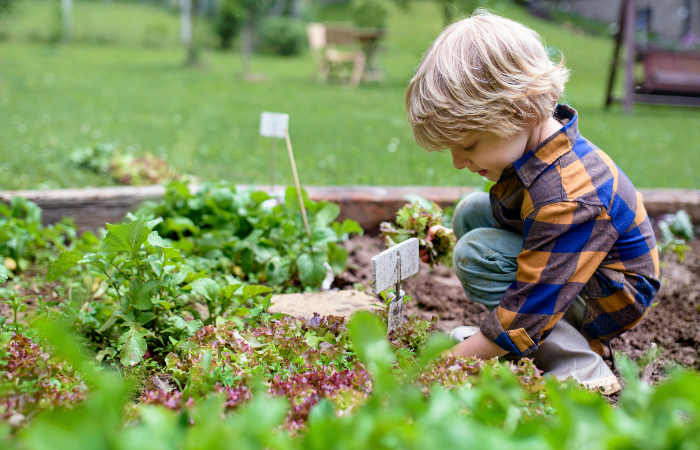
This is a top choice for family days out for free. Local farms or farmers’ markets have the best food and produce around.
Finding nearby farms that offer free tours or visits
You know, there was a time when I thought farms were just those places you drove by on long road trips. But let me tell you, visiting a local farm can be an adventure in itself!
Now, finding farms that offer free tours or visits can be a bit like searching for a needle in a haystack. (See what I did there? Farm puns. I’ve got millions of ’em!) But seriously, it takes a bit of detective work.
Start with your local agricultural extension office. I didn’t even know these existed until I stumbled upon ours while looking for info on how to get rid of the mutant zucchini squash bugs taking over my garden. Turns out, they’re a goldmine of information about local farms and agriculture programs.
Don’t underestimate the power of social media, either. I’ve seen a few local mom groups on Facebook, and it’s like unlocking a secret treasure trove of free family-friendly activities. That’s how we found out about a nearby dairy farm that offers free tours. Let me tell you, watching city kids try to milk a cow for the first time was comedy gold!
Oh, and here’s a pro tip: look for farms that participate in farm-to-table programs with local restaurants. They’re often more open to visitors and may offer tours to showcase their produce.
Exploring farmers’ markets and learning about local produce
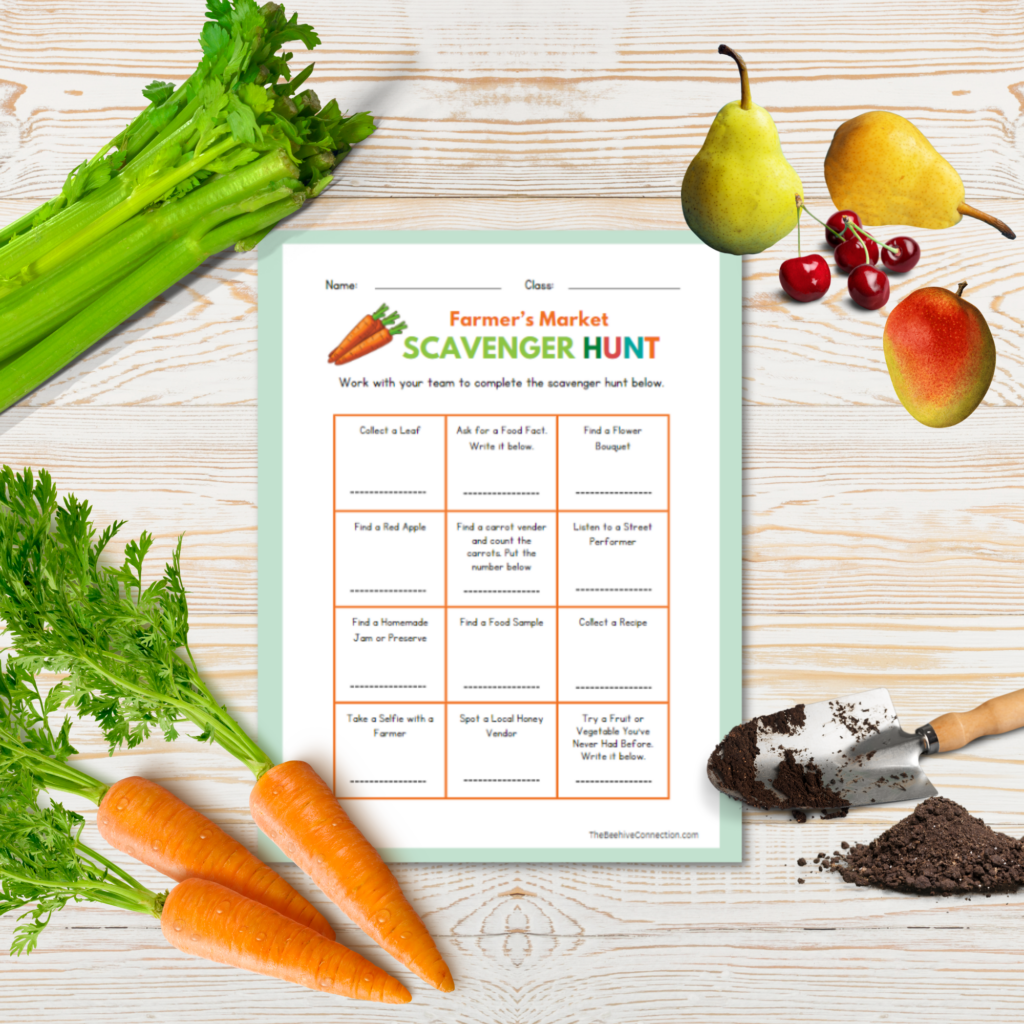
Alright, let’s talk farmers markets. These aren’t just places to buy overpriced organic kale (though there’s plenty of that too). They’re like living, breathing classrooms disguised as a fun weekend outing!
Download our Farmer’s Market Scavenger Hunt FREE Printable Here.
Our first farmers market visit was… interesting. Picture this: four kids running in four different directions, me trying to figure out what the heck kohlrabi is, and my husband looking longingly at the homemade donut stand. Chaos, I tell you!
We also play “Guess the Price.” The kids have to estimate how much different items cost based on their size, color, or how fancy the stand looks. It’s surprisingly educational. Who knew you could teach economics with a bunch of bell peppers?
One of our favorite things to do is chat with the farmers themselves. These folks are usually more than happy to talk about their produce and how it’s grown. My oldest has become quite the expert on asking all sorts of great questions thanks to long conversations.
And here’s something I wish I’d known earlier: many farmers markets offer free samples. It’s a great way to try new things without committing to a whole bag. Though word to the wise: maybe don’t let your 5-year-old try the extra-hot salsa.
Educational benefits of understanding food sources and agriculture

Now, I know what you’re thinking. “Great, another educational activity. As if my kids don’t get enough of that at school!” But hear me out. Learning about food sources and agriculture isn’t just about memorizing facts. It’s about connecting with our food and understanding where it comes from.
According to the National Farm to School Network, kids who are exposed to farm-based education show an increased willingness to try new foods and improved knowledge of nutrition.
And let me tell you, I’ve seen this firsthand. My picky eater, who used to turn her nose up at anything green, actually asked for seconds of roasted Brussels sprouts after we visited a farm and saw how they grow.
These experiences also teach kids about sustainability and environmental stewardship. We visited a farm that uses regenerative agriculture practices, and it sparked some amazing conversations about climate change and conservation. Who knew a bunch of dirt and some chickens could lead to such deep discussions?
Understanding agriculture also helps develop an appreciation for the work that goes into producing our food. After spending an hour picking peaches in the hot sun, my kids have a whole new respect for the farmers who do this every day. No more complaints about fruit being “too expensive” at the store!
And let’s not forget about the science lessons hidden in farming. From understanding plant life cycles to learning about beneficial insects, there’s so much hands-on learning happening. It’s like a biology textbook come to life, but way more fun and with way more dirt involved.
But perhaps the most important lesson is the connection between our food choices and our health. Seeing the vibrant colors of fresh produce, understanding how it’s grown, and tasting the difference in flavor – it all adds up to a greater appreciation for healthy eating.
So next time you’re looking for a fun family outing, consider swapping the mall for a farm visit or a trip to the farmers market. You might just find yourselves on an unexpected adventure, learning more than you bargained for, and maybe, just maybe, developing a newfound love for kohlrabi. (Seriously, what is that thing?)
13. Organize a Community Clean-Up Day
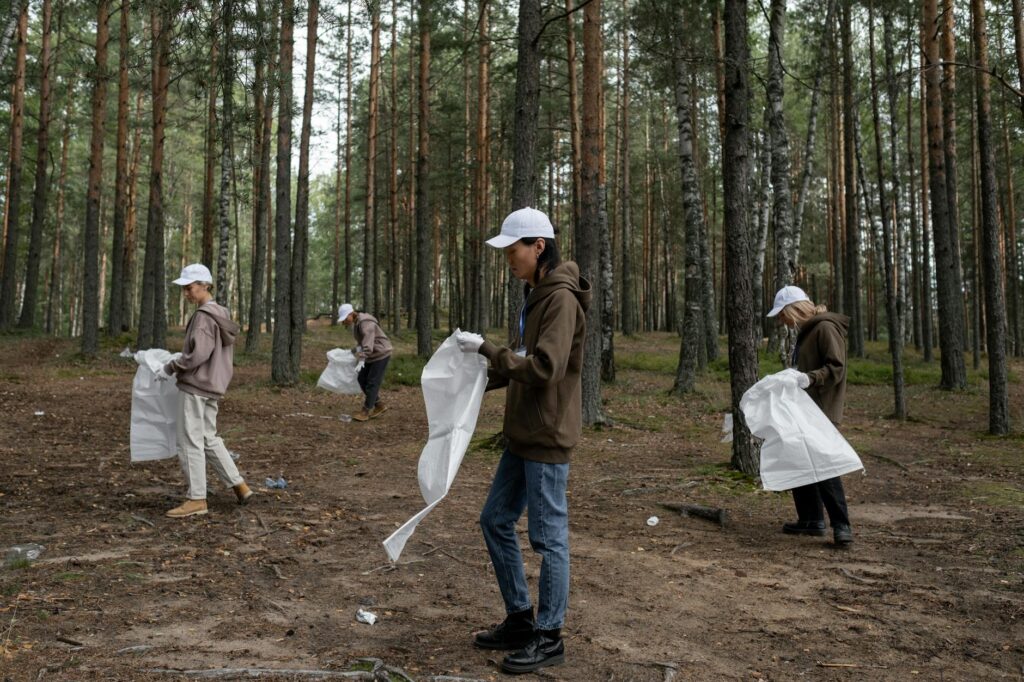
Maybe it isn’t exhilarating, but this is one of our favorite activities to do with family and friends.
Steps to plan a neighborhood or park clean-up event
Let me tell you, the first time I was asked to organize a community clean-up day, I thought it would be a breeze. You know, just grab some trash bags, round up a few neighbors, and voila! Clean neighborhood! Oh, how naive I was.
First things first, you need to pick a location. We chose an animal rescue farm and park for our inaugural clean-up. Pro tip: check with your city or town hall first. Turns out, you might need a permit to organize an event in a public space. We were able to get permission from the city and animal rescue organization to make it more beautiful.
Next up, set a date and time. We went with a Thursday evening, kids were out of school and parents were off work. We had a great turnout. By the time we finished, it was dark, but food was a great motivator.
Don’t forget to spread the word! Don’t make the mistake of relying solely on social media. Not everyone in the neighborhood is glued to Facebook 24/7. Shocker, I know. Now we use a mix of online (sign-up genius) and JustServe.org and offline promotion – social media posts, flyers in local shops, youth organizations, and good old-fashioned word of mouth.
Oh, and here’s something that will make the project work like magic: partner with local businesses. Many are happy to donate supplies or refreshments in exchange for a little publicity. Our local hardware store donated wood and other supplies. It’s a win-win!
Teaching children about environmental responsibility
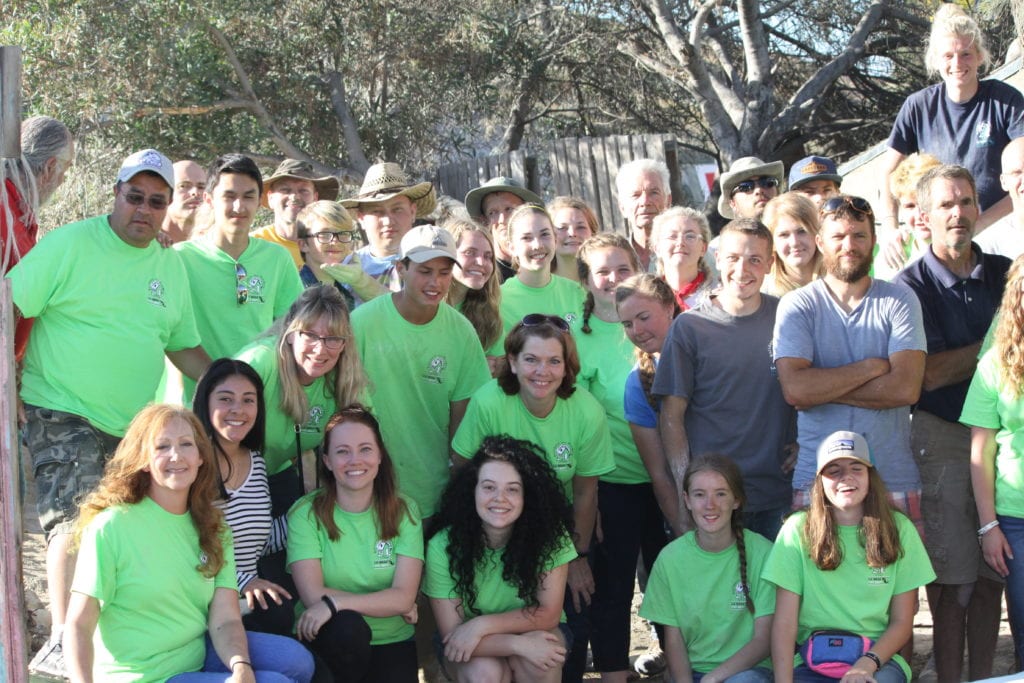
Now, getting kids excited about picking up trash might seem about as easy as getting them excited about eating Brussels sprouts. But trust me, with the right approach, it can be done!
Making it relatable is key. We talked about how litter in our park might affect the ducks in the pond or the squirrels in the trees. Suddenly, picking up trash wasn’t just a chore – it was a rescue mission for their animal friends!
Here’s a fun fact that blew my kids’ minds: according to the National Park Service, it takes a plastic bottle 450 years to decompose. We turned this into a game, trying to guess how long different types of litter take to break down. It’s both educational and slightly horrifying!
But perhaps the most effective lesson came from leading by example. When the kids saw me and other adults picking up trash without complaint (okay, maybe a little complaint), they were eager to join in. Monkey see, monkey do, as they say!
Making clean-up activities fun and rewarding for families
Alright, let’s face it – picking up trash isn’t exactly anyone’s idea of a good time. But with a little creativity, you can turn it into an event that families actually look forward to!
Start doing themed clean-ups. Superhero day is a big hit – kids can dress as their favorite heroes, “saving the Earth” one piece of litter at a time. Just be prepared for some interesting interpretations of superhero costumes. My student’s “Trash Man” outfit was… unique, to say the least.
Turning it into a friendly competition works wonders. We divide into teams and see who can collect the most trash. Pro tip: weigh the bags rather than counting items. We learned this after the great bottle cap debate of 2022. Trust me, you do not want to get into an argument about whether 100 bottle caps equal one soda bottle!
Don’t forget about rewards! They don’t have to be big – we give out small prizes like stickers or eco-friendly water bottles. One time, we had a local artist create medals out of recycled materials. Those were a huge hit!
And here’s something that can become a tradition: end with a community picnic. Everyone brings a dish to share, and you celebrate your hard work together. It’s a great way to build community spirit and show that taking care of our environment can be rewarding and fun.
Remember, the goal is not just to clean up, but to create a lasting impact. By making it enjoyable, we’re more likely to see families return for future events. And who knows? Maybe one day, we’ll show up for a clean-up and find there’s no trash to pick up. A mom can dream, right?
14. Attend Free Outdoor Movie Screenings
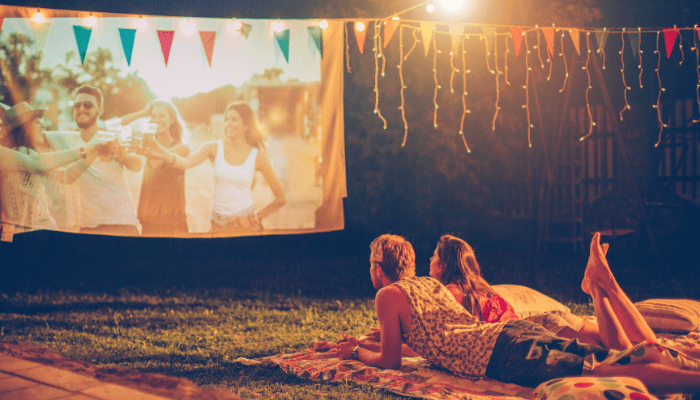
When it comes to gathering as a family and community, nothing beats free fun family activities like an outdoor movie screening.
Finding free movie events in parks or community centers
You know, when I first heard about free outdoor movie screenings, I thought it sounded too good to be true. I mean, free entertainment that doesn’t involve refereeing sibling squabbles or stepping on Legos? Sign me up!
Finding these movie events can be a bit like a treasure hunt, but trust me, it’s worth the effort. Your local parks and recreation department website is a great place to start. That’s how we found out about our city’s “Movies in the Park” series. Pro tip: sign up for their newsletter if they have one. I used to think newsletters were just digital clutter, but now it’s like having a social secretary for free family fun!
Don’t overlook your local library either. Some do movie nights on their lawn. It’s like a drive-in, minus the car and plus a lot more books. Win-win in my book!
Social media can be a goldmine for these events too. I follow our city’s official pages and local community groups. That’s how we discovered a free outdoor screening of “The Princess Bride” at a nearby outdoor venue.
Oh, and here’s a nugget of wisdom I wish I’d known earlier: check with local colleges and universities. Many have film clubs that organize free screenings open to the public. Just be prepared for some… interesting film choices.
Tips for a comfortable and enjoyable outdoor movie experience
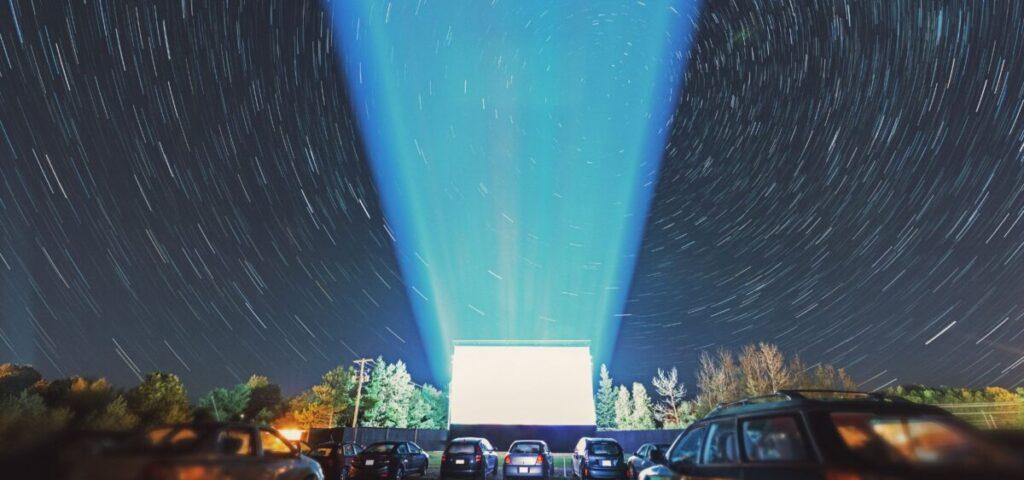
Alright, so you’ve found a free movie screening. Awesome! But trust me, a little preparation goes a long way in making sure your outdoor movie experience is more “magical family memory” and less “why did we think this was a good idea?”
First things first: seating. Most places will tell you to bring your own chairs or blankets. We learned the hard way that not all blankets are created equal when it comes to sitting on slightly damp grass. Now we bring a tarp to put under our blanket. No more wet bottoms!
Also some place won’t let you bring chairs because they block the view of the people behind you. So check out ground chairs These allow you to sit with a back without the height of a chair.
Snacks are crucial. Most free screenings let you bring your own food, which is great for both your wallet and your picky eaters. We always pack a mix of healthy stuff and treats. Pro tip: bring more than you think you’ll need. Something about watching a movie outside makes everyone ravenous!
Don’t forget about bug spray! Nothing ruins a movie faster than becoming an all-you-can-eat buffet for mosquitoes.
Layers are your friend. Even if it’s warm when the movie starts, it can get chilly once the sun goes down. We always bring sweatshirts and a couple of extra blankets. Better to have them and not need them than to end up with chattering teeth halfway through the film.
And here’s something I wish I’d thought of sooner: bring a small flashlight or headlamp. It makes navigating back to the car so much easier, especially if you’re juggling sleepy kids and all your gear.
Ideas for pre-movie activities to make it a full evening of fun
Now, here’s where you can really level up your outdoor movie experience. Most screenings don’t start until dusk, which means you’ve got a golden opportunity for some pre-movie fun!
We always arrive early to snag a good spot, and then we break out the games. Frisbee is a favorite – it’s amazing how much space you think you have until you’re trying to throw a frisbee in a crowded park! Just watch out for other moviegoers. Turns out, not everyone appreciates a surprise frisbee to the head. Who knew?
Picnic dinners are another great pre-movie activity. We often team up with other families and do a potluck style meal. It’s like dinner and a show, but way more casual and with 100% more grass stains.
For the crafty folks, bringing some art supplies can be fun. Try everything from friendship bracelet making to origami. Just be sure to bring a trash bag for clean-up. Nobody wants to be that family leaving a trail of glitter in their wake.
Here’s a fun one: movie trivia! Print out some family-friendly questions related to the movie you’re about to watch. It gets everyone excited for the film and might even teach the kids (and let’s be honest, the adults too) something new.
And don’t forget about people watching! We like to play a game where we try to guess what other families are talking about. It’s surprisingly entertaining and has led to some… interesting conversations and laughs on our part.
According to a study by the National Recreation and Park Association, 85% of Americans consider high-quality park and recreation amenities, like outdoor movies, important factors when choosing a place to live. So not only are you having a great family night out, you’re also taking advantage of what makes your community special!
Remember, the movie is just part of the experience. It’s all about creating memories and enjoying time together as a family. So grab your blankets, pack your snacks, and get ready for some cinema under the stars. Just maybe skip the pickles and popcorn combo. Trust me on this one!
15. Explore Free Local Historical Sites and Landmarks

When it comes to affordable family fun near me, I always enjoy historical sites and landmarks. They are everywhere!
Researching significant historical locations in your area
You know, when I first suggested exploring local historical sites to my kids, you’d think I’d proposed a trip to the dentist. The eye rolls were Olympic-level. But let me tell you, with a little detective work and some creative spinning, we’ve turned these outings into some of our favorite family adventures!
Start with your local historical society or tourism board. These folks are like walking, talking history books, but way more excited about it. I called ours looking for info on one site and ended up with a list of a dozen places I’d never even heard of. It was like unlocking a secret level in a video game, but with more facts and fewer dragons.
Don’t overlook your library either. Some have an entire section dedicated to local history. That’s how we discovered our town has a park dedicated to the pony express mail system. Suddenly, history wasn’t just something in textbooks – it was right under our feet!
Online resources can be a goldmine too. Websites like Atlas Obscura often have listings for lesser-known historical sites.
Oh, and here’s a pro tip: check out geocaching websites. Many geocaches are hidden near historical sites, turning your history lesson into a real-life treasure hunt. Just be prepared for some interesting “treasures.” History is weird, folks.
Creating engaging history-based scavenger hunts or quizzes
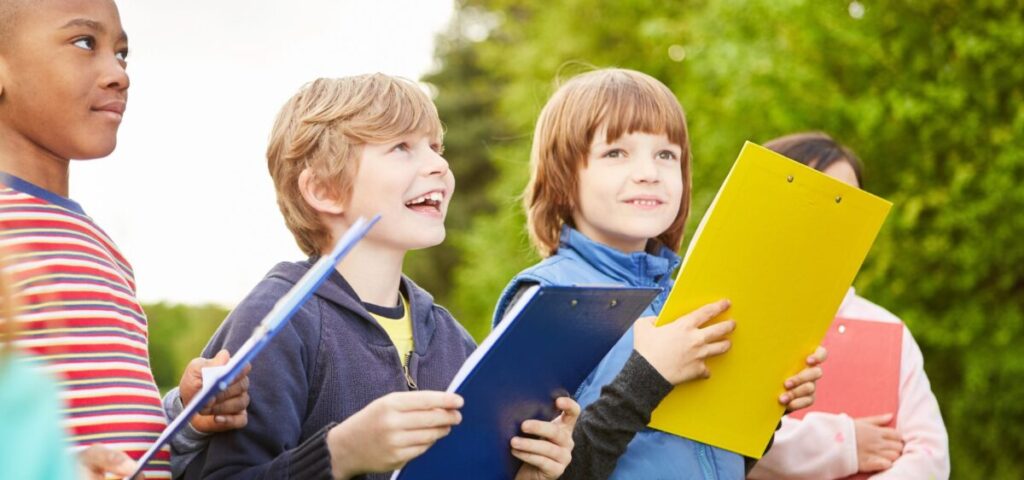
Alright, so you’ve found some cool historical sites. Now, how do you make them exciting for kids (and let’s be honest, some adults too) who think anything older than last week’s TikTok trend is ancient history?
Scavenger hunts are your secret weapon. We create a list of things to find or questions to answer at each site. For example, at the old courthouse, the kids had to count how many columns were on the front porch, find the date it was built, and spot the weird gargoyle hiding on the roof. Suddenly, they’re not just looking at an old building – they’re on a mission!
For older kids (or history buff adults), we do themed quizzes. Revolutionary War sites? Great! Everyone gets a tricorn hat , and maybe do a Hamilton-style rap battle with historical facts. Is it dorky? Absolutely. Do the kids love it? You bet your powdered wig they do!
Photo challenges can be fun too. You can give the kids a list of things to take pictures of – like “something older than Grandpa” or “a sign with a date on it.” It keeps them engaged and gives us some… interesting photos for the family album.
And here’s something that’s been a hit: historical figure bingo. You can make cards with names of local historical figures, and the kids have to find mentions of them on plaques or information boards.
First one to get bingo gets to choose our post-adventure treat. Nothing motivates a kid to learn about 18th-century mayors like the promise of ice cream!
Connecting local history to broader historical contexts for educational value
Now, I know what you’re thinking. “Great, so my kids can name all the former mayors of our town. How is that actually useful?” But here’s the thing – local history is like a gateway drug to understanding bigger historical events. (Okay, maybe not the best analogy for kids, but you get the idea.)
We always try to connect what we’re seeing to larger historical events. That old cannon in the town square? It’s not just a great place for pigeons to hang out – it’s a tangible link to the Civil War. Suddenly, those boring textbook chapters come to life!
According to the National Council on Public History, there are over 35,000 museums in the United States, many of them small, local institutions. That’s more museums than McDonald’s restaurants! It really drives home the point that history is all around us, not just in big cities or famous landmarks.
We also like to play the “what if” game. Standing in front of an old Colonial-era house, we’ll ask, “What if we had to live here 300 years ago? What would be different? What would be the same?” It gets the kids thinking about how people’s daily lives have changed over time.
Comparing local events to national ones can be eye-opening too. When you visit your town’s old textile mill, you can talk about how it connected to the Industrial Revolution happening all over the country. It’s like your little town was a piece of a much bigger historical puzzle.
And let’s not forget about the power of personal connection. We always try to find stories of people close to the kids’ ages from different historical periods. Reading the diary of a 12-year-old from 200 years ago really brings home the idea that history isn’t just about dates and famous people – it’s about real people living their lives.
Remember, the goal isn’t to turn your kids into walking encyclopedias. It’s about sparking curiosity and helping them understand how the past shapes our present. And hey, if they end up acing their history tests because of your family field trips, consider that a bonus!
So grab those comfortable shoes, pack some snacks (history makes you hungry, trust me), and get ready to time travel in your own backyard. Just maybe leave the tricorn hats at home if you’re going somewhere fancy. Learned that one the hard way!
Conclusion for 15 Free Family Activities in Your Local Community
There you have it – 15 amazing, free activities that’ll keep your family entertained, engaged, and connected! Remember, the best memories don’t come with a price tag. By exploring these options in your local community, you’re not just saving money; you’re investing in quality time together. So, what are you waiting for? Pick an activity from this list and start planning your next family adventure today! Your wallet will thank you, and your kids will thank you even more for the incredible memories you’re creating. Let’s make this the year of budget-friendly family fun!
GET FREE ACCESS TO OUR LIBRARY OF FREE PRINTABLES AND RESOURCES!
Enter Your Name and Email for FREE Access to our Library of FREE Home and Family Printables Series!
